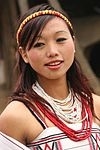List of 230 Scheduled Tribes in India
India is a diverse country with a population of over 1.3 billion people, and a significant portion of this population belongs to various tribal communities. These tribal communities, also known as Scheduled Tribes, have their own unique cultures, languages, and traditions, and have played an important role in the country’s history.
Here is a list of some of the major Scheduled Tribes in India:
Dhanka
The Dhanka are a Subgroup of Bhil tribe or caste of India who believe themselves to be aboriginal, although they are unable to assert from whence they came.found in Rajasthan, Haryana, Uttar Pradesh ,Gujarat ,Maharashtra ,Chhattisgarh and Madhya Pradesh they are no relation with dhanuk kurmi . They are historically neither Hindu nor Muslim and their occupations have changed over time, as circumstances have dictated for survival. Although similar groups in India are often referred to as adivasi, the Dhanka generally reject this term.
Read More About Dhanka / Source
Jarawas

The Jarawas (Jarawa: Aong, pronounced [əŋ]) are an indigenous people of the Andaman Islands in India. They live in parts of South Andaman and Middle Andaman Islands, and their present numbers are estimated at between 250–400 individuals. They have largely shunned interaction with outsiders, and many particulars of their society, culture and traditions are poorly understood. Since the 1990s, contacts between Jarawa groups and outsiders grew increasingly frequent. By the 2000s, some Jarawas had become regular visitors at settlements, where they trade, interact with tourists, get medical aid, and even send their children to school.
The Jarawas are recognised as an Adivasi group in India. Along with other indigenous Andamanese peoples, they have inhabited the islands for several thousand years. The Andaman Islands have been known to outsiders since antiquity; however, until quite recent times they were infrequently visited, and such contacts were predominantly sporadic and temporary. For the greater portion of their history their only significant contact has been with other Andamanese groups. Through many decades, contact with the tribe has diminished quite significantly.
There is some indication that the Jarawa regarded the now-extinct Jangil tribe as a parent tribe from which they split centuries or millennia ago, even though the Jarawa outnumbered (and eventually out-survived) the Jangil. The Jangil (also called the Rutland Island Aka Bea) were presumed extinct by 1931.The Jarawa are a designated Scheduled Tribe in India.
Read More About Jarawas / Source
Nicobarese
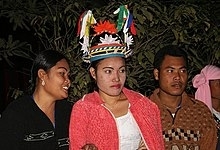
The Nicobarese people are an Austroasiatic-speaking people of the Nicobar Islands, a chain of islands in the Bay of Bengal north of Sumatra, forming part of the union territory of Andaman and Nicobar Islands, India. Only 12 of the 19 islands are inhabited. The largest and main island is Great Nicobar. The term Nicobarese refers to the dominant tribes of the Nicobar Islands. On each island, the people have specific names, but together they are the Nicobarese. They call themselves Holchu, which means “friend”.The Nicobarese are a designated Scheduled Tribe in India.
Read More About Nicobarese / Source
Gadabas
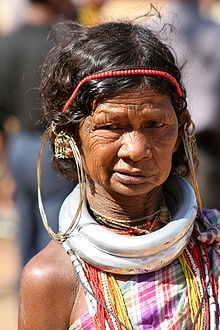
The Gadaba or Gutob people are an ethnic group of eastern India. They are a designated Scheduled Tribe in Andhra Pradesh and OdishaThere are 84,689 Gadabas in Odisha and 38,081 in Andhra Pradesh as per the 2011 Indian census. The subgroups of Gadaba are Bada Gadaba, Sana Gadaba, Gutab Gadaba, Farenga Gadaba and Allar Gadaba. Their socioeconomic life is based on farming and daily labour. They are involved in both Slash-and-burn and plow cultivation. They live in permanent villages. They are well known for their tribal dance, the Dhemsa. The Gadabas speak Gutob and Ollari, which are Austroasiatic and Dravidian languages respectively. Since the early 1980s the Gadabas have largely been displaced from their villages by the building of hydro-electric dams and the resulting lakes.
Gadaba women traditionally wear neck rings which are about 500-700 grams each and can not be removed without the help of a blacksmith. As a part of their tradition, it is only removed after their death. A Gadaba woman traditionally wears a two-piece dress which is very colorful, often striped in red, blue and white, which is woven by the women themselves. The ornaments they wear are not very different from those of other tribes.
Read More About Gadabas / Source
Valmiki
Valmiki is a name used by a variety of communities throughout India who all claim descent from the author of the Ramayana, Valmiki. The Valmikis can be classified as a caste or Sampradaya (tradition/sect). In the North West Punjab region, this caste had adopted Sikhism. They were given the task of engaging in war. The Indian British government recruited them in their army and declared them a martial caste. During the Indian Rebellion of 1857, many valmiki were prominent freedom fighters. Notable examples include Matadin Bhangi, Gangu Mehtar, Bhura Singh Valmiki. At the present time many changes have been seen in this caste, now they incline towards politics and government high positions.
According to the 2001 Census of India, the Valmikis formed 11.2 per cent of the Scheduled Caste population in Punjab and were the second-most populous Scheduled Caste in Delhi National Capital Region.
The 2011 Census of India for Uttar Pradesh showed the Valmiki population, which was classified as a Scheduled Caste, as 1,319,241.
Read More About Valmiki / Source
Aka
The Aka are Tribal group of people living in the East Kameng & West Kameng District of Arunachal Pradesh, Popularly know as the Koro of East kameng and the Hrusso of West kameng District. Both the Koro-Hrusso aka have different linguistic practices otherwise basically identical culturally, and they both are considered by themselves to be part of the same tribe of Arunachal Pradesh. Their language belongs to the Tibeto-Burman family.
Kharia
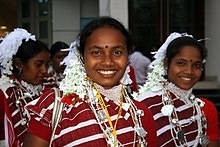
The Kharia are an Austroasiatic tribal ethnic group from east-central India. They originally speak the Kharia language, which belong to Austroasiatic languages. They are sub-divided into three groups known as the Hill Kharia, Delki Kharia and the Dudh Kharia. Amongst them, the Dudh Kharia is the most educated community.
Read More About Kharia / Source
Malankuravan
Malankuravan (Mala Koravan, Malakkuravan) is an unclassified Dravidian language of southern India, on the southern border of Kerala and Tamil Nadu. It may be a dialect of Malayalam with Tamil influence or a language closely related to Malayalam.
Read More About Malankuravan / Source
Onges
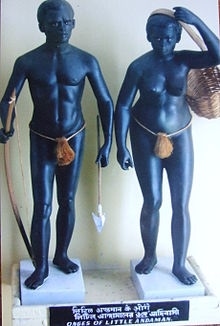
The Onge (also Önge, Ongee, and Öñge) are an Andamanese ethnic group, indigenous to the Andaman Islands in Southeast Asia at the Bay of Bengal, currently administered by India. They are traditionally hunter-gatherers and fishers, but also practice plant cultivation. They are designated as a Scheduled Tribe of India.
Read More About Onges / Source
Sentinelese
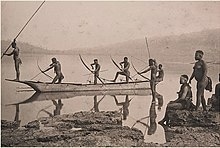
The Sentinelese, also known as the Sentineli and the North Sentinel Islanders, are an indigenous people who inhabit North Sentinel Island in the Bay of Bengal in the northeastern Indian Ocean. Designated a Particularly Vulnerable Tribal Group and a Scheduled Tribe, they belong to the broader class of Andamanese peoples.
Along with the Great Andamanese, the Jarawas, the Onge, the Shompen, and the Nicobarese, the Sentinelese are one of the six native and often reclusive peoples of the Andaman and Nicobar Islands. Unlike the others, the Sentinelese appear to have consistently refused any interaction with the outside world. They are hostile to outsiders and have killed people who approached or landed on the island.In 1956, the Government of India declared North Sentinel Island a tribal reserve and prohibited travel within 3 nautical miles (5.6 kilometres) of it. It further maintains a constant armed patrol to prevent intrusions by outsiders. Photography is prohibited. There is significant uncertainty as to the group’s size, with estimates ranging between 15 and 500 individuals, but mostly between 50 and 200.
Read More About Sentinelese / Source
Shom Pens

The Shompen or Shom Pen are the indigenous people of the interior of Great Nicobar Island, part of the Indian union territory of Andaman and Nicobar Islands.
The Shompen are a designated Scheduled Tribe.
Read More About Shom Pens / Source
Andamanese
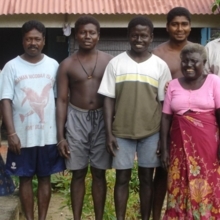
The Andamanese are the indigenous peoples of the Andaman Islands, part of India’s Andaman and Nicobar Islands union territory in the southeastern part of the Bay of Bengal in Southeast Asia. The Andamanese peoples are among the various groups considered Negrito, owing to their dark skin and diminutive stature. All Andamanese traditionally lived a hunter-gatherer lifestyle, and appear to have lived in substantial isolation for thousands of years. It is suggested that the Andamanese settled in the Andaman Islands around the latest glacial maximum, around 26,000 years ago.The Andamanese peoples included the Great Andamanese and Jarawas of the Great Andaman archipelago, the Jangil of Rutland Island, the Onge of Little Andaman, and the Sentinelese of North Sentinel Island. At the end of the 18th century, when they first came into sustained contact with outsiders, an estimated 7,000 Andamanese remained. In the next century, they experienced a massive population decline due to epidemics of outside diseases and loss of territory. Today, only roughly 400–450 Andamanese remain, with the Jangil being extinct. Only the Jarawa and the Sentinelese maintain a steadfast independence, refusing most attempts at contact by outsiders.
The Andamanese are a designated Scheduled Tribe in India’s constitution.
Read More About Andamanese / Source
Andh
The Andh are a designated Scheduled Tribe in the Indian states of Maharashtra, Telangana and Andhra Pradesh. Andhs have the originated from the Satavahan dynasty.Andh community is one of the oldest Hindu community in India At the time of Satvahan rule, the king was the owner of the lands and the forests but some time after the death of the Satvahan king, the East India Company decreed all lands and forests under their governance. This was the cause of the Andh becoming isolated and non-progressed. They seem to have is originated in southern India in the vicinity of Madras which was once ruled by the Andhra dynasty. However the identification is only used for the people who by the start of the 20th century had a long history of presence in central India.
The Andh are the original descendants of the Andhra dynasty or Satvahana dynasty that ruled between third century BC to second century AD. At the time of Nijamshah of Hyderabad, before the marathwada region were isolated, Andh are the ruling satvahan dynastry, but after the attack of Nijamshah on this region Satvahan dynasty collapsed due to the death of the king and region had to be taken into ‘Hyderabad Sansthan’. After this massive loss the Andh agreed to live as a tribe.
≠
The Andhs live primarily in the hills of the Adilabad district in Telangana. They are further subdivided into the Vertali and the Khaltali. The Vertali consider themselves a superior people and avoid marrying the Khaltali. “It seems highly possible that the word Andh is only a corruption of the Sanskrit ‘Andhra’, a designation given by the ancient Aryans to an aboriginal tribe dwelling in the Andhra Desh ” (Wilson, V.P. 190).
Similarly Andhs too speak Marathi. The Sanskrit word Andh is Andhr. The Satavahana clan of Andhras is said to have established first ever empire in entire Deccan two thousand years ago at Kotilingala, Jagtial district. Their inscriptions were in Maharashtri variant of Prakrit language, majority scholars say. Even today, the Andhs living in Telangana (across erstwhile Adilabad district) speak Marathi. Therefore, it can be surmised that Marathi also has its origins in Telangana.In Maharashtra the Andh comprise 474110 population (census 2011). Andh are distributed in Parbhani, Nanded, Yeotmal, Akola districts mainly. They called themselves Hindu and are relatively well progressed in education.
According to the Anthropological Survey of India, there are over 74,000 Andhs in Maharashtra. These Andhs speak Telugu, Marathi. The Andhs are primarily Hindus. In, Andhra Pradesh, Telangana About 100,000 Andh speak the Telugu.
Bagata
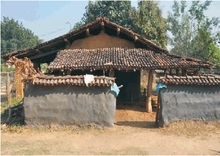
Bagata people are one of the tribal ethnic groups of India, mainly concentrated in Andhrapradesh and Odisha. As per the Indian constitution, they are designated as Scheduled Tribe for affirmative action.
Read More About Bagata / Source
Bhil
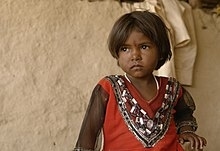
Bhil or Bheel is an ethnic group in western India. They speak the Bhil languages, a subgroup of the Western Zone of the Indo-Aryan languages. As of 2013, Bhils were the largest tribal group in India.Bhils are listed as tribal people of the states of Gujarat, Madhya Pradesh, Chhattisgarh, Maharashtra and Rajasthan—all in the western Deccan regions and central India—as well as in Tripura in far-eastern India, on the border with Bangladesh. Bhils are divided into a number of endogamous territorial divisions, which in turn have a number of clans and lineages. Many Bhils now speak the dominant later language of the region they reside in, such as Marathi, Gujarati or a Bhili language dialect.
Chenchu
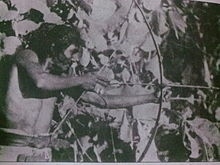
The Chenchus are a Dravidian tribe, a designated Scheduled Tribe in the Indian states of Andhra Pradesh, Telangana, Karnataka and Odisha. They are an aboriginal tribe whose traditional way of life been based on hunting and gathering. The Chenchus speak the Chenchu language, a member of the Dravidian language family. In general, the Chenchu relationship to non-tribal people has been largely symbiotic. Some Chenchus have continued to specialize in collecting forest products for sale to non-tribal people. Many Chenchus live in the sparse and deciduous Nallamala forest of Andhra Pradesh.
The Chenchus are referred to as one of the Primitive Tribal Groups that are still dependent on forests and do not cultivate land but hunt for a living. Non-tribe people living among them rent land from the Chenchus and pay a portion of the harvest. Other people also settled among them with the help of the Chenchus and learned agriculture from them, and the nomadic Banjara herders who graze their cattle in the forest also have been allotted land there. The Chenchus have responded unenthusiastically to government efforts to induce them to take up agriculture themselves.
Read More About Chenchu / Source
Gond
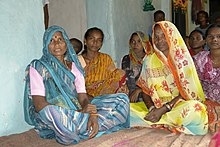
The Gondi (Gōndi) or Gond or Koitur are a Dravidian ethno-linguistic group. They are one of the largest tribal groups in India. They are spread over the states of Madhya Pradesh, Maharashtra, Chhattisgarh, Uttar Pradesh, Telangana, Andhra Pradesh, Bihar, assam, arunachal Pradesh, uttarakhand and Odisha. They are listed as a Scheduled Tribe for the purpose of India’s system of reservation. The Gond have formed many kingdoms of historical significance.
A Dravidian language, Gondi is claimed to be related to the Telugu. The 2011 Census of India recorded about 2.98 million Gondi-speakers. They are concentrated in southeastern Madhya Pradesh, eastern Maharashtra, southern Chhattisgarh and northern Telangana. Many Gonds, however, speak later regionally-dominant languages like Hindi, Marathi, Odia and Telugu.According to the 1971 census, their population was 5.01 million. By the 1991 census, this had increased to 9.3 million and by the 2001 census the figure was nearly 11 million. For the past few decades, they have seen the Naxalite–Maoist insurgency in the central part of India. Gondi people, at the behest of the Chhattisgarh government, formed the Salwa Judum, an armed militant group to fight the Naxalite insurgency; But Salwa Judum was disbanded by order of Supreme court on 5 July 2011.
Hill Reddis
The Konda Reddis or Hill Reddis are a designated Scheduled Tribe in the Indian state of Andhra Pradesh and neighboring states of Odisha, Tamil Nadu.They are entirely unrelated to the Hindu caste also known by the name Reddy. They live predominantly in the Khammam district, with a smaller number in the West and East Godavari districts. Konda Reddis are not listed as tribals in the state of Odissa despite the community demand. The Konda Reddis normally speak in Telugu with outsiders. The 1991 Census of India counted 432 Hill Reddis..
Read More About Hill Reddis / Source
Jatapus
The Jatapu people are a designated Scheduled Tribe in the Indian states of Andhra Pradesh and Odisha Jatapus are a Adivasitribe and are traditionally pastoral farmers. Through acculturation the Jatapus speak Telugu and have in many ways adopted the culture of the surrounding Telugu people. There were over one million Jatapus in 1991.
Read More About Jatapus / Source
Kammara
The Kammara are blacksmiths since ancient times, situated in the state of Karnataka in India.The name Kammāra/kammar (in Prakrit/pali/kannada) / Karmāra (in Sanskrit) means a smith, artist, mechanic, craftsman, sculptor, blacksmith; a maker of tools and weapons (Mar. śikalagāra); ततः संधाय विमलान् भल्लान् कर्मारमार्जितान् (tataḥ saṃdhāya vimalān bhallān karmāramārjitān). Since Vedic times they are masters in metallurgy and craftsmanship. Owing to their usefulness they were held in great esteem by the people and king alike. They worship goddess Kali and Lord Vishwakarma. Their services were in great demand by everyone since ancient times, from making weapons for kings and soldiers to making tools and equipment for building temples, and also to the farmers, whose agricultural implements have to be made and constantly repaired.
Recently, most members have given up their traditional occupations and have resorted to other jobs. It is noted in the Bellary Gazetteer that “until recently the manufacture of the huge shallow iron pans, in which the sugar-cane is boiled, was a considerable industry at Kāmalāpuram. The iron was brought by pack bullocks from Jambunath Konda, the dome-shaped hill at the Hospet end of the Sandūr range, and was smelted and worked by men of the Kammara community. Of late years, the cheaper English iron has completely ousted the country product, the smelting industry is dead, and the Kammaras confine themselves to making and mending the boilers with English material. They have a temple of their own, dedicated to Kāli, in the village, where the worship is conducted by one of themselves.” The name Baita Kammara, meaning outside blacksmiths, is applied to Kamsala blacksmiths, who work in the open air or outside a village.”*
Madras Census Report, 1901.
Read More About Kammara / Source
Kattunayakan
Kattunayakar are a designated scheduled tribe in the Indian states of Andhra Pradesh, Karnataka, Kerala, and Tamil Nadu.The word Kattunayakar means the king of the jungle in Tamil and Malayalam. The Kattunayakar are one of the earliest known inhabitants of the Western Ghats, who are engaged in the collection and gathering of forest produce, mainly wild honey and wax.The men wear short dhotis and half-sleeved shirts. The women attach a long single piece of cloth round their body just below the neck, leaving the shoulders and arms bare. Child marriages were common before the 1990s, but now the girls marry after attaining puberty. Monogamy is the general rule among the Kattunayakar community.
Kattunayakar believe in Hinduism and have a language which is a mixture of all Dravidian languages. The main deity of the tribe is Lord Shiva and Nayakkar under the name of Bhairava. They also worship animals, birds, trees, rock hillocks, and snakes, along with the other Hindu deities.
Kattunayakar are fond of music, songs, and dancing. They are also called Cholanaickar and Pathinaickars.
Read More About Kattunayakan / Source
Kolam
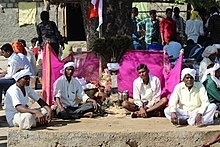
Kolam are a designated Scheduled Tribe in the Indian states of Telangana, Chhattisgarh, Madhya Pradesh and Maharashtra. They belong to the sub-category Particularly vulnerable tribal group, one of the three belonging to this sub-category, the others being Katkari and Madia Gond.They are common in the Yavatmal, Chandrapur and Nanded districts of Maharashtra and live in hamlets called pod. They speak the Kolami language, which is a Dravidian language. They are an agricultural community.They have a high rate of returning positive to the Naked eye single tube red cell osmotic fragility test (NESTROFT) test, making them prone to high incidence of Thalassaemia.
Read More About Kolam / Source
Kondareddis
The Konda Reddis or Hill Reddis are a designated Scheduled Tribe in the Indian state of Andhra Pradesh and neighboring states of Odisha, Tamil Nadu.They are entirely unrelated to the Hindu caste also known by the name Reddy. They live predominantly in the Khammam district, with a smaller number in the West and East Godavari districts. Konda Reddis are not listed as tribals in the state of Odissa despite the community demand. The Konda Reddis normally speak in Telugu with outsiders. The 1991 Census of India counted 432 Hill Reddis..
Read More About Kondareddis / Source
Kondhs
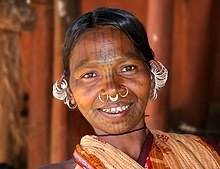
Khonds (also spelt Kondha, Kandha etc.) are an indigenous Adivasi tribal community in India. Traditionally hunter-gatherers, they are divided into the hill-dwelling Khonds and plain-dwelling Khonds for census purposes; All the Khonds identify by their clan and usually hold large tracts of fertile land but still practice hunting, gathering and slash-and-burn agriculture in the forests as a symbol of their connection to and ownership of the forest. Khonds speak the Kui and Kuvi languages and write them in Odia script.
The Khonds are adept land-dwellers, exhibiting greater adaptability to the forest environment. However, due to development interventions in education, medical facilities, irrigation, plantation and so on, they are forced into the modern way of life in many ways. Their traditional life style, customary traits of economy, political organisation, norms, values and world view have been drastically changed over a long period.
They are a designated Scheduled Tribe in the states of Andhra Pradesh, Bihar, Chhattisgarh, Madhya Pradesh, Maharashtra, Odisha, Jharkhand and West Bengal.
Read More About Kondhs / Source
Goud
Goud is a caste consisting predominantly of indigenous people in the Indian states of Telangana and Andhra Pradesh. Gouds are traditionally involved in toddy tapping. However, they are also involved in many modern occupations.
The Gouds are rapidly developing. However, Goud women lag behind in development.
Malis
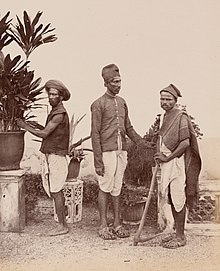
The Mali are an occupational caste found among the Hindus who traditionally worked as gardeners and florists. They also call themselves Phul Mali due to their occupation of growing flowers. The Mali are found throughout North India, East India as well as the Terai region of Nepal and Maharashtra.
Iravati Karve, an anthropologist, showed how the Maratha caste was generated from Kunbis who simply started calling themselves “Maratha”. She states that Maratha, Kunbi and Mali are the three main farming communities of Maharashtra – the difference being that the Marathas and Kunbis were “dry farmers” whereas the Mali farmed throughout the year.[2]
Read More About Malis / Source
Manna Dhora
Manna-Dora is either a nearly extinct Dravidian language closely related to Telugu, or a dialect of Telugu. It is spoken by the eponymous Scheduled Tribe in the state of Andhra Pradesh, India.
Read More About Manna Dhora / Source
Mukha Dhora
Mukha-Dora (Nuka-Dora) is one of the Dravidian languages spoken in India. It is spoken by a scheduled tribe, who use Telugu as their primary language. It is spoken by the eponymous Scheduled Tribe in the state of Andhra Pradesh, India.Sathupati Prasanna Sree has developed a unique script for use with the language.
Read More About Mukha Dhora / Source
Pardhan
Pardhan (or Pradhan) is a dialect of Gondi spoken by the Pardhan people, a community who are the traditional bards of the Gonds. Its speakers are found in areas where the Gonds live: southeastern Madhya Pradesh, far-eastern Maharashtra and northern Telangana. Approximately 140,000 people speak this dialect.
Read More About Pardhan / Source
Savaras
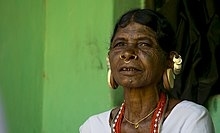
The Sora (alternative names and spellings include Saora, Saura, Savara and Sabara) are a Munda ethnic group from eastern India. They live in southern Odisha and north coastal Andhra Pradesh.
The Soras mainly live in Gajapati, Rayagada and Bargarh districts of Odisha. They are also present in Srikakulam, Vizianagaram and Visakhapatnam districts. In the census, however, some Soras are classified under Shabar or Lodha, the name for another very different Munda tribe. They inhabit blocks of Gunupur, Padmapur and Gudari. Their highest concentration is found in the Puttasingi area, approximately 25 km away from Gunupur NAC. Although, they are close to the assimilation process, yet some interior GPs like Rejingtal, Sagada and Puttasingi have Soras who still retain their traditional tribal customs and traditions.
They are known by various names such as Savara, Sabara, Sora, and Soura. They are concentrated in parts of Gunupur adjoining to the blocks of Gumma, Serango of Gajapati district. The Soras speak Sora, a Munda language. However, written language in Sora is not followed by all. They practice shifting cultivation, with a few gradually taking up settled agriculture.
They are of medium or short stature. The Savara villages consist of houses with mud walls and sedge grass roofs, usually situated in foothills. The adult males dress with a gavancha and the women with saris. They are also sometimes called Lanjia Souras due to their dress pattern of wearing a loin cloth hanging from behind and which could be mistakenly identified as a tail by a stranger.
They are endogamous and the clan, although absent, is related to Birinda, which is exogamous. Families are nuclear although joint or extended families are also found. Marriages are made by bride capture, elopement, and by negotiations.
The Sora people are a dwindling jungle tribe with a distinctive shamanic culture. According to an article in Natural History, “a shaman, usually a woman, serves as an intermediary between the two worlds [of the living and the dead]. During a trance, her soul is said to climb down terrifying precipices to the underworld, leaving her body for the dead to use as their vehicle for communication. One by one the spirits speak through her mouth. Mourners crowd around the shaman, arguing vehemently with the dead, laughing at their jokes, or weeping at their accusations.”
Read More About Savaras / Source
Sugalis
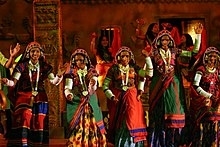
The Banjara (also known as ,Vanzara,Lambadi,Gour Rajput,Labana) are a historically nomadic trading caste who may have origins in the Mewar region of what is now Rajasthan.
Read More About Sugalis / Source
Thoti
The Thoti are one of the Scheduled tribes of India. In 1991 there were 3,654 Thoti reported by the census of India. In 2001 the census figure for Thoti was 2,074.
The Thoti live in Andhra Pradesh primarily in Adilabad district, Warangal district, Nizamabad district and Karimnagar district.
The Thoti speak a dialect of the Gondi language.
Read More About Thoti / Source
Yenadis
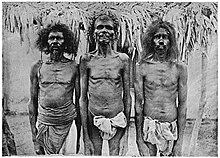
The Yenadis also spelled Yanadi are one of the Scheduled tribes of India. They live in Andhra Pradesh in Nellore, Chittoor and Prakasam districts. The tribe is divided among three subgroups: the Manchi Yanadi, Adavi Yanadi, and Challa Yanadi.
Yanadhi is a corruption of the word “Andati” (Aborigines), meaning “having no beginning.”form.
In the early 20th century, they were still living a hunter-gatherer lifestyle. Edgar Thurston speculated their name was derived from the Sanskrit anadi, ‘without origin.’ Some claim to be the original inhabitants of their region, others claimed to be descended from the Chenchus. At the time a local tradition claimed they had provided food for a saint a long time before, who had taught them how to drive out snakes from their area. They used to live on Sriharikota, which later became the launch site for ISRO.
At the turn of the 20th century, the Reddi Yanadis were cooks in Reddy households, who didn’t mingle with other subsections of the tribe. Others followed a hunter-gatherer lifestyle, and occasionally were employed as watchmen. They have immense knowledge of the surrounding forests, flora, fauna and herbs. They ate forest fauna and gathered fruits of the forest.
They traditionally lived in conical huts through which adults had to squat to enter. Widows, especially those with more husbands, were respected as judges of adultery and other crimes. They practiced polygamy, and 1 man even had 7 wives.In 2011 their population was 537,808.The Yanadi speak a dialect of Telugu.
Read More About Yenadis / Source
Yerukulas
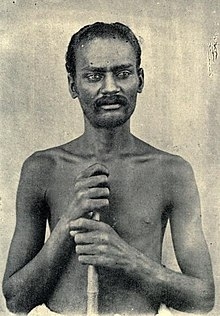
Yerukala or Erukala or Erukula is a Tamil tribal community primarily found in Andhra Pradesh and Telangana.
The population of Yerukala tribes according to 2011 census is 519,337. The total literacy rate among Yerukula is 48.12%. Most live in southern coastal Andhra and Rayalaseema, with a smaller minority in districts of Telangana. Their native language is Tamil based Yerukala but most have shifted to Telugu. They were vilifed in British sources for being habitual criminals, and so were placed under Criminal Tribes Act, although they were underrepresented in the population of criminals and were most likely targeted for their nomadic lifestyle.
Read More About Yerukulas / Source
Abor
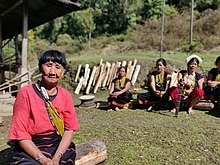
The Adi people are one of the most populous groups of indigenous peoples in the Indian state of Arunachal Pradesh. A few thousand are also found in the Tibet Autonomous Region, where they are called the Lhoba together with some of the Nishi people, Na people, Mishmi people and Tagin people.
They live in a region of the Southern Himalayas which falls within the Indian state of Arunachal Pradesh and the Mainling, Lhunze, Zayu, Medog, and Nyingchi counties in the Tibet Autonomous Region, China. The present habitat of the Adi people is heavily influenced by the historic location of the ancient Lhoyu. They are found in the temperate and sub-tropical regions within the districts of Siang, East Siang, Upper Siang, West Siang, Lower Dibang Valley, Lohit, Shi Yomi and Namsai within Arunachal Pradesh. The term “Adi” however, is not to be confused with the Lhoba people, since the Lhoba also includes the Mishmi along with the Adi people. All the ethnic groups recognizing themselves as “Adi” are believed to be descendants of the Abutani/Abotani. The older term Abor is an exonym from Assamese and its literal meaning is “independent”. The literal meaning of adi is “hill” or “mountain top”.
Apatani
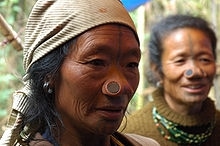
The Apatani (or Tanw, Tanii) are a tribal group of people living in the Ziro valley in the Lower Subansiri district of Arunachal Pradesh in India. This tribe speaks the languages Apatani, English and Hindi.
Read More About Apatani / Source
Dafla
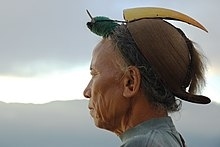
The Nyishi community is the largest ethnic group in Arunachal Pradesh in north-eastern India. In Nyishi, Nyi refers to “a human” and the word shi denotes “highland”.The Nyishis are mentioned as the Daflas in the contemporary Ahom documents and consequently the British documents as well as the historians of the post-independence period used the same term for the Nyishis.This terminology is, however,not used nowadays. They are spread across eight districts of Arunachal Pradesh: Kra Daadi, Kurung Kumey, East Kameng, West Kameng, Papum Pare, parts of Lower Subansiri, Kamle, and Pakke Kessang district. The Kurung Kumey and Kra Daadi districts have the largest concentration of Nyishi population. The Nyishis also live in the Sonitpur and North Lakhimpur districts of Assam.
Their population of around 300,000 makes them the most populous tribe of Arunachal Pradesh, closely followed by the tribes of the Adi according to 2001 census. The Nyishi language belongs to the Sino-Tibetan family, however, the origin is disputed.
Polygyny is prevalent among the Nyishi. It signifies one’s social status and economical stability and also proves handy during hard times like clan wars or social huntings and various other social activities. This practice, however is diminishing especially with the modernization and also with the spread of Christianity. They trace their descent patrilineally and are divided into several clans.
Read More About Dafla / Source
Galong
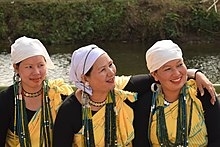
The Galo are a central Eastern Himalayan tribe, who are descendants of Abotani and speak the Tani Galo language. The Galo people primarily inhabit West Siang, Lepa Rada, and Lower Siang districts of modern-day Arunachal Pradesh state in northeastern India, but they are also found in the southwestern side of East Siang district, the southeastern side of Upper Subansiri district, as well as in some small pockets in Itanagar. Other names which have been used to reference the Galo in the past include Duba, Doba, Dobah Abor, Gallong Abor, Galong, Gallong Adi, etc. The Galo have been listed as a scheduled tribe under the name Gallong since 1950.
Read More About Galong / Source
Khampti
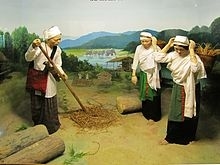
The Tai Khamti, (Khamti: တဲး ၵံးတီႈ, (Thai: ชาวไทคำตี่, Burmese: ခန္တီးရှမ်းလူမျိုး, Hkamti Shan) or simply Khamti as they are also known, are a Tai ethnic group native to the Hkamti Long, Mogaung and Myitkyina regions of Kachin State as well as Hkamti District of Sagaing Division of Myanmar. In India, they are found in Namsai district and Changlang district of Arunachal Pradesh. Smaller numbers are present in Lakhimpur district, Dhemaji district and Munglang Khamti village in Tinsukia district of Assam and possibly in some parts of China. According to 2001 census of India, the Tai Khamtis have a population of 12,890. In Myanmar their total population is estimated at 200,000 people.The Tai Khamtis who inhabit the region around the Tengapani basin of Arunachal Pradesh were descendants of migrants who came during the eighteenth century from the Hkamti Long region, the mountainous valley of the Irrawaddy.
The Tai-Khamti are followers of Theravada Buddhism. The Tai-Khamti have their own script for their language, known as ‘Lik Tai’, which originated from the Shan (Tai) script of Myanmar. Their mother tongue is known as Khamti language. It is a Tai language, closely related to Thai and Lao.
Read More About Khampti / Source
Khowa
The Buguns (formerly Khowa) are one of the earliest recognized schedule tribe of India, majority of them, inhabiting the Singchung Sub-Division of West Kameng District of Arunachal Pradesh. Their total population is approximately 3000. The notable features of Buguns are reflected in their simple life and warm hospitality. Buguns live in several exogamous clans. Traditionally, the predominant occupation was agriculture, supported with other allied activities like fishing and hunting, cattle rearing etc. Buguns have their own folklores, songs, dances, music and rituals. A rare bird, the Bugun liocichla, was named after the tribe.
They live mainly in the subtropical Singchung Administrative Sub-Division of West Kameng district with its, almost whole, native population under 6-Thrizino-Buragaon ST Assembly Constituency of the state of Arunachal Pradesh. According to the native legend, they believed that they are the descendants of a single forefather Achinphumphulua.
Read More About Khowa / Source
Mishmi
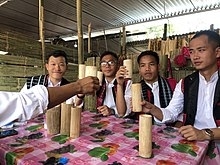
The Mishmi people of Tibet and Arunachal Pradesh are an ethnic group located in the northeastern tip of the central Arunachal Pradesh in Upper and Lower Dibang Valley, Lohit and Anjaw Districts, all bordering southern Tibet in northeast India. The area is known as the Mishmi Hills. Only one group, called the Deng, occupy Zayu County in southern Tibet.The Mishmi consist of four tribes: Idu Mishmi (Idu Lhoba); Digaro tribe (Taraon, Darang Deng), Miju Mishmi (Kaman Deng), and the Deng Mishmi. The four sub-divisions of the tribe emerged due to the geographical distribution, but racially all the four groups are of the same stock.The Idu are also known as Yidu Lhoba in Tibet and often referred as Chulikatas in Assam. The Idus are primarily concentrated in the Upper Dibang Valley and Lower Dibang Valley district and parts of the northern part of Lohit district of Arunachal Pradesh in India. Taraon, also called Digaru Mishmis, are distributed in the hill and the foothills between the Dibang, Digaru and the Lohit rivers. Kamans are also known as the Miju Mishmis; they live between the Lohit and the Kambang rivers in the foothills and in the Mishmi Hills on both sides of the Lohit river right up to the frontiers to Rima. There are around 30,000 of them in Arunachal Pradesh.
The Idu-Mishmi believes that Rukmini-Chief Consort of Lord Krishna belonged to their tribe. The plays and dances on ‘Rukmini haran’ are common.There is a legend that
Lord Krishna asked the Mishmi people to cut their hair as a form of punishment for not allowing him to marry Rukmini. Due to this Idu-Mishmi people are also called “chulikata” (chuli-hair, kata- cut). Most of these are considered to be a fabrication. Historians point to the creation of these myths during the propagation of the eksarana-namadharma in the 16th century around Sadiya, which influenced the regional identity of the place. The Mishmis began to identity with the legendary Vaishnava characters created during this period which led to the formation of a alternate identity.
Read More About Mishmi / Source
Momba
The Memba are a people of Arunachal Pradesh. The Memba population is currently around four to five thousand. They mainly live in the districts of Shi Yomi, West Siang and Upper Siang. Some also in nearby Tibet. The religious life of the Memba revolves around the Mechuka Gompa, similar to the Monpa of West Kameng and Tawang. Local genealogies suggested that they came from Tibet and settled in the region several centuries ago.The Memba are agriculturalists and grow maize, millet, potato, cereals and paddy. Boiled rice and millet flour are staples in the Memba diet.All Memba villages have their own watermills. Their homes, like most of the other Tibetan Buddhist tribes, are made of stone and wood. The house is raised above the ground and the floor and walls are made of wooden planks. Corrugated aluminum has replaced wood as a roofing material in recent years.The Membas follow Nyingmapa Tibetan Buddhism and have their own script, Hikor, which is derived from the Tibetan script. In every village, there is a small Gompa presided by a Buddhist Lama. As devout Buddhists, they follow all the intricate details of rituals of Buddhist puja, hoisting at least a Buddhist prayer flag or a string of small Buddhist prayer flags in front of every household. Festivals that are celebrated by the Memba include Losar and Choskar.
Read More About Momba / Source
Naga tribes
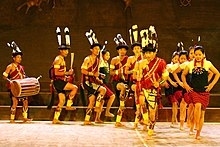
Nagas are various ethnic groups native to northeastern India and northwestern Myanmar. The groups have similar cultures and traditions, and form the majority of population in the Indian states of Nagaland and Manipur and Naga Self-Administered Zone of Myanmar; with significant populations in Arunachal Pradesh and Assam in India; Sagaing Region and Kachin State in Myanmar (Burma).
The Nagas are divided into various Naga ethnic groups whose numbers and population are unclear. They each speak distinct Naga languages often unintelligible to the others, but all are loosely connected to each other.
Read More About Naga tribes / Source
Sherdukpen
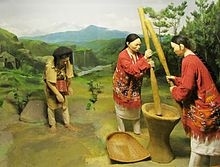
The Sherdukpen are an ethnic group of Arunachal Pradesh state of India. Their population of 9,663 is centered in West Kameng district in the villages of Rupa, Jigaon, Thongri, Shergaon, to the south of Bomdila. All of these are at elevations between 5000–6000 feet above sea level. Of late, some of them have settled in Kameng bari areas, a new settlement area under Bhalukpong circle.
Read More About Sherdukpen / Source
Singpho
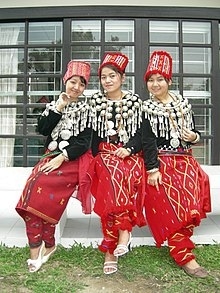
The Jingpo people (Burmese: ဂျိန်းဖော) are an ethnic group who are the largest subset of the Kachin peoples, which largely inhabit the Kachin Hills in northern Myanmar’s Kachin State and neighbouring Dehong Dai and Jingpo Autonomous Prefecture of China. There is also a significant Jingpo community in northeastern India’s Arunachal Pradesh and Assam, as well as in Taiwan. While they mostly live in Myanmar, the Kachin are called the Jingpo in China (Chinese: 景颇族; pinyin: Jǐngpō zú) and Singpho in India – the terms are considered synonymous. The greater name for all the Kachin peoples in their own Jingpo language is the Jinghpaw. Other endonyms include Tsaiva, Lechi, Theinbaw, Singfo, ChingpawThe Kachin people are an ethnic affinity of several tribal groups, known for their fierce independence, disciplined fighting skills, complex clan inter-relations, craftsmanship, herbal healing and jungle survival skills. Other neighbouring residents of Kachin State include the Shans (Thai/Lao related), the Lisus, the Rawangs, the Nagas, and the Bamar, the latter forming the largest ethnic group in Burma. In China, the Jingpo form one of the 55 ethnic minorities, where they numbered 147,828 people in the 2010 census.
Read More About Singpho / Source
Barmans in Cachar
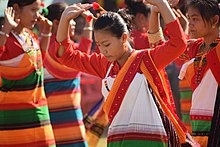
The Dimasa Kachari plains tribe of Cachar are known as Barman, forming one of the indigenous tribes of undivided Cachar (including Dima-Hasao, Hailakandi and Karimganj). The Dimasas, inhabiting in the Cachar district are officially recognized as one of the Scheduled Tribes under the plains category in Assam in the name called “Barmans in Cachar”.
Read More About Barmans in Cachar / Source
Deori
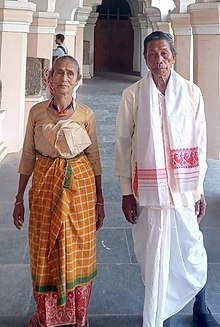
The Deori are one of the major indigenous communities of Assam. They historically lived in the area of Sadiya, Joidaam, Patkai foothills and in the upper plains or also called as the hinterland of the Brahmaputra Valley. Concrete documented records about the history of the tribe is very limited. Scanty information was found in few books and official records. The Deori language belongs to the Boro-Garo branch of the Tibeto-Burman language family. The community has maintained their racial traits, language, religion, folktales and traditional beliefs through the centuries. They were divided into Jimochayan/Dibang-Diyongial(Dibongia), Midoyan/Tengapania, Luitugan/Borgoya. The native language is retained only by the Dibongia group.
Read More About Deori / Source
Hojai
Hojai or Hojaisa is a surname of the Dimasa people. Which means known as the son of a priest.
Read More About Hojai / Source
Kachari
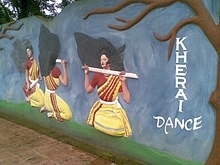
Bodo–Kacharis (also Kacharis or Bodos) is a name used by anthropologist and linguists to define a collection of ethnic groups living predominantly in the Northeast Indian states of Assam, Tripura, and Meghalaya. These peoples are speakers of either Boro–Garo a subbranch of Tibeto-Burman languages or Assamese of Eastern Indo-Aryan languages and some of them possibly share ancestries. Some Tibeto-Burman speakers who live closely in and around the Brahmaputra valley, such as the Mising people and Karbi people, are not considered Bodo–Kachari. Many of these peoples have formed early states in the late Medieval era of Indian history (Chutia Kingdom, Dimasa Kingdom, Koch dynasty, Twipra Kingdom) and came under varying degrees of Sanskritisation.
The speakers of Tibeto–Burman are considered to have reached the Brahmaputra valley via Tibet and settled in the foothills of the eastern Himalayan range which includes the whole of Assam, Tripura, North Bengal and parts of Bangladesh. It has been suggested by different linguists that the proto-Boro–Garo language emerged as the lingua franca of the region to which Austroasiatic and other non-Tibeto-Burman speakers had shifted. Among these ethnic groups, Garo, Rabha, Tiwa, and some Koch peoples might have been either influenced by Austroasiatic cultures, or were themselves originally Austroasiatic speakers. Boro language, one of the languages in the Boro–Garo group, has been recognised as an eighth scheduled Indian language in 2004.The belief that Bodo–Kacharis were early settlers of the river valleys is taken from the fact that most of the rivers in the Brahmaputra valley today carry Tibeto–Burman names—Dibang, Dihang, Dikhou, Dihing, Doiyang, Doigrung etc.—where Di/Doi- means water in Boroic languages, and many of these names end in -ong, which is water in Austroasiatic. The Kacharis were also some of the first people to rear silkworms and produce silk material and were considered to be associated with ahu rice culture in Assam before the advent of sali (transplanted rice) was introduced from the Gangetic plains.Some of the groups, such as Moran and Saraniya consider themselves as Hindus under Ekasarana Dharma. The Garo and the Koch peoples follow rules of matrilineal society.
Read More About Kachari / Source
Lalung
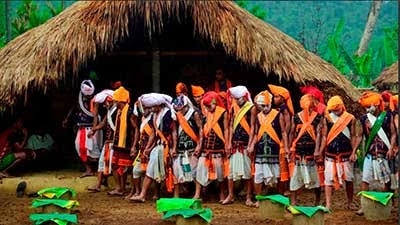
Tiwa is an ethnic group mainly inhabiting the states of Assam and Meghalaya in northeastern India. They are also found in some areas of Arunachal Pradesh, Manipur and Nagaland. They are recognized as a Scheduled tribe within the State of Assam. They were known as Lalungs in the Assamese Buranjis and in Colonial literature and in the Constitution of India, though members of the group prefer to call themselves Tiwa (meaning “the people who were lifted from below”). Some of their neighbours still call them Lalung.A striking peculiarity of the Tiwa is their division into two sub-groups, Hill Tiwa and Plains Tiwas, displaying contrasting cultural features. The founder of Tiwa community is Pha Poroi “Indrosing Dewri” who has contributed a lot to the construction of Tiwa society. He also wrote the Tiwa national anthem called – O Angé Tiwa Tosima.
Read More About Lalung / Source
Mech
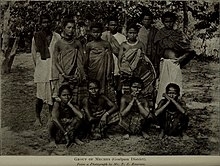
The Mech (spelled Meche in Nepal; pronounced /mes/ or /meʃ/) is an ethnic group belonging to the Bodo-Kachari group of peoples. It is one of the scheduled tribes of India, listed both in West Bengal and Assam, India. They inhabit West Bengal, Nepal, Assam and Nagaland.
Miji
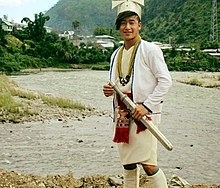
The Miji, also known by the names of Sajolang and Damai, inhabit the districts of West Kameng, East Kameng and a minuscule region of Kurung Kumey in Arunachal Pradesh, India. Their population of 37,000 are found near the lower parts of the sub-Himalayan hills bordering Assam; they speak the Sajalong language. The word Miji is derived from two distinct words 1) Mai means fire and 2) ji meaning Giver. The word/name came into being after the Aka ( Hrusso) community regarded the Sajolang/Dammai people for their gracious help during the past (pre-historic period).
Rabha
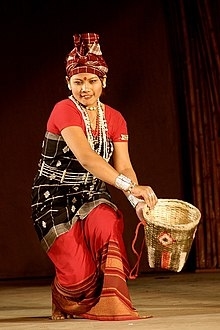
The Rabha are a Tibeto-Burman community to the Indian states of Assam, Meghalaya and West Bengal. They primarily inhabit the plains of Lower Assam and the Dooars, while some are found in the Garo Hills. Most of the Rabhas of Dooars refer to themselves as Rabha, but some of them often declare themselves as Kocha.The Rabha community have a rich, multi-faceted and distinct culture of their own. The agricultural practices, food habit and belief systems of the Rabhas reflect a conglomeration of features from both the Indo-Aryan and Tibeto-Burmese culture. The Rabha society is patrilineal . The village economy is based on agriculture and both men and women work in the fields. The women wear colorful clothes that they weave themselves and wear a lot of beads and silver ornaments. The Rabhas are non-vegetarians and rice is their staple food.
The traditional economy of the Rabhas in general, is based on agriculture, forest based activities and weaving. In the past, the Rabhas used to practice shifting cultivation. They continued to cultivate the land with Gogo or bill-hook. Later they took up the job of settled cultivation and started cultivation with plough. Besides cultivation, hunting was also an old practice of Rabha people. Weaving was a traditional occupation of the Rabha women.
The Rabhas are mostly found in Lower Assam on the south bank of the Brahmaputra, in the districts of Goalpara and Kamrup. Some are found in the north bank districts of Baksa, Udalguri and Kokrajhar. In Meghalaya, the Rabhas mainly live in West Garo Hills, East Garo Hills, North Garo Hills and South Garo Hills. In West Bengal, the Rabha inhabit the district of Alipurduar.
Read More About Rabha / Source
Boro
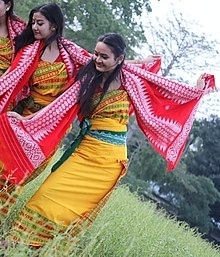
Boro (बर’/बड़ो [bɔɽo]), also called Bodo, is the largest ethnolinguistic group in the Assam state of India. They are a part of the greater Bodo-Kachari family of ethnolinguistic groups and are spread across northeastern India. They are concentrated mainly in the Bodoland Territorial Region of Assam, though Boros inhabit all other districts of Assam and Meghalaya.Boros are officially listed as “Boro, Borokachari” scheduled tribe under the Constitution of India. Boros speak the Boro language, a Boro-Garo language of the Tibeto-Burman family, which is recognised as one of twenty-two Scheduled languages of India. Over two-thirds of the people are bilingual, speaking Assamese as second language. The Boro along with other cognate groups of Bodo-Kachari peoples are prehistoric settlers who are believed to have migrated at least 3000 years ago. Boros are mostly settled farmers, who have traditional irrigation, dong.The Boro people are recognised as a plains tribe in the Sixth Schedule of the Indian Constitution, and have special powers in the Bodoland Territorial Region, an autonomous division; and also as a minority people.
Chakma
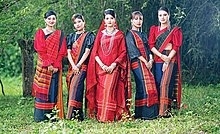
The Chakma people (Chakma: 𑄌𑄋𑄴𑄟𑄳𑄦; ) are a tribal group from the eastern-most regions of the Indian subcontinent. They are the largest ethnic group in the Chittagong Hill Tracts region of southeastern Bangladesh, and the second-largest in Mizoram, India (Chakma Autonomous District). Other places in Northeast India also have significant Chakma populations. Around 60,000 Chakma people live in Arunachal Pradesh, India; a first generation migrated there in 1964 after the construction of the Kaptai Dam forced them off their lands. Another 79,000 Chakmas live in Tripura, India, and 20,000-30,000 in Assam, India.
The Chakma possess strong ethnic affinities to Tibeto-Burman groups in Northeast India. Because of a language shift in the past to consolidate power among the tribes, they adopted an Indo-Aryan language, Chakma, which is closely related to the Chittagonian dialect of Bengali, predominant near the areas in which they live. Most modern Chakma people practice Theravada Buddhism, due to 19th-century reforms and institutionalization by Queen regnant Rani Kalindi. In Myanmar, Chakma people are known as Daingnet and are one of the 135 officially recongised ethnic groups there.
The Chakmas are divided into 31 clans or gozas. The community is headed by the Chakma Raja, whose status as a tribal head has been historically recognized by the Government of British India and the Government of Bangladesh.
The relationships between Chakmas and their neighbors are complex. On one hand, many Chakmas are well-integrated in mainstream middle-class Bangladeshi and Indian society and are particularly notable for their service as officers and ambassadors in Bangladesh’s military and diplomatic corps. Chakma politicians have served as ministers in the national ministry of Bangladesh and the state ministry of Tripura. However, the persecution of the indigenous tribes of the Chittagong Hill Tracts, of which the Chakma are the predominant ethnicity, has been described as genocidal, but since the Chittagong Hill Tracts Peace Accord, violence in the area has been greatly reduced.
Read More About Chakma / Source
Dimasa
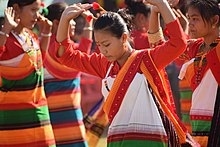
The Dimasa people (local pronunciation: [dimāsā]) are an ethnolinguistic community presently inhabiting in Assam and Nagaland states in Northeastern India. They speak Dimasa, a Tibeto-Burman language. This community is fairly homogeneous and exclusive, with members required to draw from both parents’ separate clans. Dimasa kingdom, one of many early states in Assam following the downfall of Kamarupa kingdom, was established by these people. The Dimasas were till recently agricultural, centering on shifting agriculture; but in recent times this has changed with profound changes in the community. Following political problems in the 18th century, the Dimasa ruler moved further south in the plains of Cachar and there took place a division among them–with the hills Dimasa maintaining their traditional living and political exclusiveness, the plains Dimasas have made no attempt to assert themselves.Ancient Dimasa tradition maintains that sixty thousand (60,000) Moon months (Lunar months) ago, they left their ancestral land when it suffered a severe drought. After long wandering, they settled at Di-laobra Sangibra, the confluence of the Brahmaputra and Sangi or Di-tsang, where they held a great assembly.
Read More About Dimasa / Source
Garo
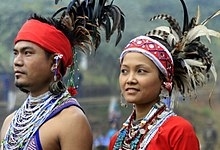
The Garo is a Tibeto-Burman ethnic tribal group from the Indian subcontinent, living mostly in the Indian states of Meghalaya, Assam, Tripura, and Nagaland, and in neighbouring areas of Bangladesh, including Madhupur, Mymensingh, Haluaghat, Dhobaura, Durgapur, Kolmakanda, Jamalpur, Sherpur, Jhinaigati, Nalitabari, Gazini Hills Madhyanagar, Bakshiganj and Sribardi. Historically, the name Garo was used for wide range of inhabitants in southern bank of Brahmaputra but now refers to those who call themselves A•chik Mande (literally “hill people,” from A•chik “bite soil” + mande “people”) or simply A•chik or Mande and the name “Garo” is now being used by outsiders as an exonym. They are the second-largest tribe in Meghalaya after the Khasi and comprise about a third of the local population.
Hajong
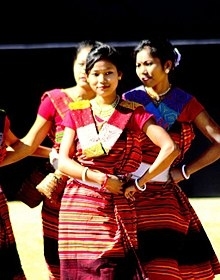
The Hajong people are an ethnic group from Northeast India and northern parts of Bangladesh. The majority of the Hajongs are settled in India and are predominantly rice-farmers. They are said to have brought wet-field cultivation to Garo Hills, where the Garo people used slash and burn method of agriculture. Hajong have the status of a Scheduled Tribe in India and they are the fourth largest tribal ethnicity in the Indian state of Meghalaya.
Read More About Hajong / Source
Hmar
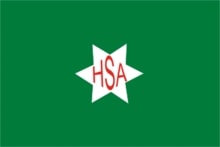
Hmar, also spelled as Mar, are one of the ethnic peoples of the Chin-Kuki-Mizo living in Northeast Indian state of Manipur and Mizoram, western Myanmar (Burma) and eastern Bangladesh.
Karbi

The Karbis, mentioned as the Mikir are one of the major ethnic communities in Northeast India mostly concentrated in the hill district of Karbi Anglong of Assam.
Read More About Karbi / Source
Khasi
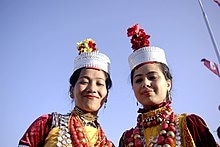
The Khasi people are an ethnic group of Meghalaya in north-eastern India with a significant population in the bordering state of Assam, and in certain parts of Bangladesh. Khasi people form the majority of the population of the eastern part of Meghalaya, that is Khasi Hills, constituting 78.3% of the region’s population, and is the state’s largest community, with around 48% of the population of Meghalaya. They are among the few Austroasiatic-speaking peoples in South Asia. The Khasi tribe holds the distinction of being one of the few remaining matriarchal tribes of the world. Under the Constitution of India, the Khasis have been granted the status of Scheduled Tribe.
Read More About Khasi / Source
Kuki Tribes
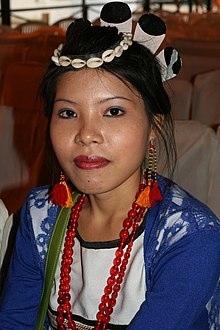
The Kuki people are an ethnic group native to the Mizo Hills (formerly Lushai), a mountainous region in the southeastern part of Mizoram and Manipur in India. The Kuki constitute one of several hill tribes within India, Bangladesh, and Myanmar. In Northeast India, they are present in all states except Arunachal Pradesh.Some fifty tribes of Kuki peoples in India are recognised as scheduled tribes, based on the dialect spoken by that particular Kuki community as well as their region of origin.
The Chin people of Myanmar and the Mizo people of Mizoram are kindred tribes of the Kukis. Collectively, they are termed the Zo people.
Read More About Kuki Tribes / Source
Lakher
The Mara are the native inhabitants of Mizoram in India, native to northeastern India, primarily in the Mara Autonomous District Council of the state of Mizoram, where they form the majority of the population. The Maras are related to Kuki and Mizos in India and Kachin, Karen, Shan and Chins in Myanmar. Significant numbers of Maras also live in the southwestern and south-central parts of Chin State (Burma) in Myanmar – the contiguous area of Mara area in India mostly separated by Kolodyne / Chhimtuipui / Beino river, which forms an international boundary.
They have gone by a number of tribal names to the outside world. The Mara were earlier known as Magha, Miram, Baungshel, Maring, Zyu or Zao/Zho, Khuangsai. Additionally they were known as Lakher by the Tlaikao/Lushai, Miram by the Lai, and Shendu by the Khumi, Dai, Shô, Matu, and Rakhaing people. The new name Mara was added to the List of Scheduled Tribes in Mizoram state in 1978, replacing the old name. They constitute a distinct tribal group in the Siaha / Saiha district of Mizoram, while also occupying the northern part of Paletwa township and Matupi township, western and southern part of Thlantlang township, and the southern part of Hakha township. They refer to themselves as “Maras”.
Read More About Lakher / Source
Manchu
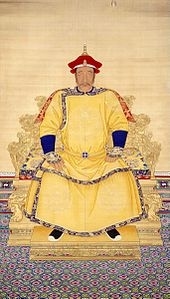
The Manchus (Manchu: ᠮᠠᠨᠵᡠ, Möllendorff: manju; Chinese: 滿族; pinyin: Mǎnzú; Wade–Giles: Man3-tsu2)A are a Tungusic East Asian ethnic group native to Manchuria in Northeast Asia. They are an officially recognized ethnic minority in China and the people from whom Manchuria derives its name. The Later Jin (1616–1636) and Qing (1636–1912) dynasties of China were established and ruled by the Manchus, who are descended from the Jurchen people who earlier established the Jin dynasty (1115–1234) in northern China.
Manchus form the largest branch of the Tungusic peoples and are distributed throughout China, forming the fourth largest ethnic group in the country. They can be found in 31 Chinese provincial regions. Among them, Liaoning has the largest population and Hebei, Heilongjiang, Jilin, Inner Mongolia and Beijing have over 100,000 Manchu residents. About half of the population live in Liaoning and one-fifth in Hebei. There are a number of Manchu autonomous counties in China, such as Xinbin, Xiuyan, Qinglong, Fengning, Yitong, Qingyuan, Weichang, Kuancheng, Benxi, Kuandian, Huanren, Fengcheng, BeizhenB and over 300 Manchu towns and townships.: 206–207 Manchus are the largest minority group in China without an autonomous region.
Read More About Manchu / Source
Mizo
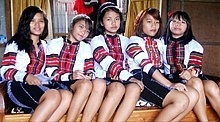
The Mizo people (Mizo: Mizo hnam) are an ethnic group native to the Indian state of Mizoram and neighbouring regions of Northeast India. The term covers several related ethnic groups or clans inside the Mizo group.
All Mizo tribes and clans claim in their folk legends that Sinlung (alternatively called “Chhinlung” or “Khul”) was the cradle of the Mizos. Sinlung can either refer to “enclosed with a rock” in the Mizo languages or to a main ancestor named “Chin-Laung” from whom Mizo, Chin and other clans descended.
The present Indian state of Mizoram (literally “Mizoland”) was historically called the Lushai Hills or Lushai District. The Lushai Hills area was defined as an excluded area during the British Raj, and as a district of Assam in independent India.The Mizo are divided into several clans, including The RALTE, PAITE, LAI, HMAR, LUSEI, MARA, THADOU/KUKI. Other Mizo people reside in other states in the immediate vicinity of Mizoram, such as Tripura, Assam, Manipur, and Nagaland. The majority of Mizo outside India live across the border in neighbouring Chin State and Sagaing Region, Burma.
The dispersed distribution of Mizo people can be attributed to two factors: migratory practices due to the slash-and-burn Jhum agriculture by villagers, which in turn led to a rapid expansion of their territory during the 18th and 19th centuries, and the pacification of India under British rule. Khawnglung Run is a Mizo-language film, based on true events of the historical massacre of Khawnglung during 1856–1859.The Mizo were particularly dissatisfied with the government’s inadequate response to the 1959–60 mautâm famine. The Mizo National Famine Front, a body formed for famine relief in 1959, later developed into a new political organisation, the Mizo National Front (MNF) in 1961. A period of protests and armed insurgency followed in the 1960s, with the MNF seeking independence from India.In 1971, the government agreed to convert the Mizo Hills into a Union Territory, which came into being as Mizoram in 1972. Following the Mizoram Peace Accord (1986) between the Government and the MNF, Mizoram was declared a full-fledged state of India in 1987.The Mizo people historically speak the Tibeto-Burman Mizo language. There are multiple varieties corresponding to the various clans, but the official and most widely spoken is Duhlian language, which serves as a lingua franca among the Mizo clans. English is the most widely used language for non-Mizo speakers in Mizoram. The state has one of the highest literacy rates in India, at more than 90%.
Pawi
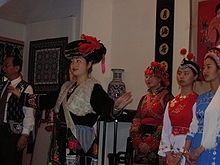
The Bai, or Pai (Bai: Baipho, /pɛ̰˦˨xo̰˦/ (白和); Chinese: 白族; pinyin: Báizú; Wade–Giles: Pai-tsu; endonym pronounced [pɛ̀tsī]), are an East Asian ethnic group native to the Dali Bai Autonomous Prefecture of Yunnan Province, Bijie area of Guizhou Province, and Sangzhi area of Hunan Province. They constitute one of the 56 ethnic groups officially recognized by China. They numbered 1,933,510 as of 2010.
Syntheng
The Pnar, also known as Jaiñtia, are a sub-tribal group of the Khasi people in Meghalaya, India. The Pnar people are matrilineal. They speak the Pnar Language, which belongs to the Austro-Asiatic language family and is very similar to the Khasi language. The Pnar people are natives of West Jaintia Hills and East Jaintia Hills District of Meghalaya, India. They call themselves as “Ki Khun Hynñiew Trep” (Children of 7-hut). Their main festivals are Behdeinkhlam, Chad Sukra, Chad Pastieh and Laho Dance.
Read More About Syntheng / Source
Asur
Asur people are a very small Austroasiatic ethnic group living primarily in the Indian state of Jharkhand, mostly in the Gumla, Lohardaga, Palamu and Latehar districts. They speak Asur language, which belongs to Munda family of Austro-asiatic languages.
Baiga
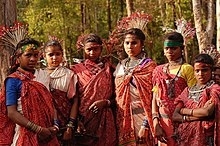
The Baiga are an ethnic group found in central India primarily in the state of Madhya Pradesh, and in smaller numbers in the surrounding states of Uttar Pradesh, Chhattisgarh and Jharkhand. The largest number of Baiga is found in Baiga-chuk in Mandla district and Balaghat district of Madhya Pradesh. They have sub-castes: Bijhwar, Narotia, Bharotiya, Nahar, Rai maina and Kath maina. The name Baiga means “sorcerer-medicine man”.
Read More About Baiga / Source
Bathudi
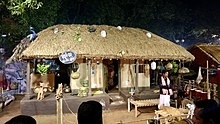
The Bathudi are a community found mainly in the north western part of Odisha. Some Bathudis, however migrated to neighbouring states of Jharkhand and West Bengal. The 2011 census showed their population to be around 220,859. They are classified as a Scheduled Tribe by the Indian government.
Read More About Bathudi / Source
Bhumij
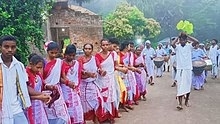
Bhumij is a Munda ethnic group of India. They primarily live in the Indian states of West Bengal, Odisha, and Jharkhand, mostly in the old Singhbhum district. Also in states like Bihar and Assam. There is also a sizeable population found in Bangladesh. Bhumijas speak the Bhumij language, an Austroasiatic language, and use Ol Onal script for writing.
Read More About Bhumij / Source
Binjhia
The Binjhia (also known as Binjhoa, Binjhawar) is an ethnic group found in Odisha and Jharkhand. The 2011 census showed their population to be around 25,835. They are classified as a Scheduled Tribe by the Indian government.
Read More About Binjhia / Source
Birhor
Birhor people (Birhul) are a tribal/Adivasi forest people, traditionally nomadic, living primarily in the Indian state of Jharkhand. They speak the Birhor language, which belongs to the Munda group of languages of the Austroasiatic language family.
Read More About Birhor / Source
Chero
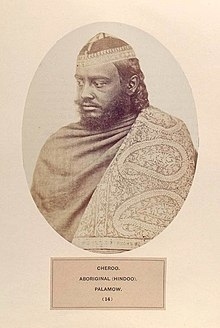
The Chero is a caste found in the states of Bihar, Jharkhand and Uttar Pradesh in India.
Read More About Chero / Source
Ho
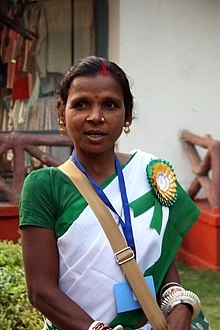
The Ho or Kolha people are an Austroasiatic Munda ethnic group of India. They call themselves the Ho, Hodoko and Horo, which mean ‘human’ in their own language. Officially, however, they are mentioned in different subgroups like Kolha, Mundari, Munda, Kol and Kolah in Odisha. They are mostly concentrated in the Kolhan region of Jharkhand and Odisha where they constitute around 10.7% and 7.3% of the total Scheduled Tribe population respectively, as of 2011 . With a population of approximately 700,000 in the state in 2001, the Ho are the fourth most numerous Scheduled tribe in Jharkhand after the Santals, Kurukhs, and Mundas. Ho also inhabit adjacent areas in the neighboring states of Odisha, West Bengal and Bihar bringing the total to 806,921 as of 2001. They also live in Bangladesh and Nepal.The ethnonym “Ho” is derived from the Ho language word hō meaning “human”. The name is also applied to their language which is an Austroasiatic language closely related to Mundari. According to Ethnologue, the total number of people speaking the Ho language was 1,040,000 as of 2001. Similar to other Austroasiatic groups in the area, the Ho report varying degrees of multilingualism, also using Hindi and English.Over 90% of the Ho practice the indigenous religion Sarnaism. The majority of the Ho are involved in agriculture, either as land owners or labourers, while others are engaged in mining. Compared to the rest of India, the Ho have a low literacy rate and a low rate of school enrollment. The government of Jharkhand has recently approved measures to help increase enrollment and literacy among children.
Karmali
The Karmali is an artisan tribe of Jharkhand. It is composed of blacksmiths. They are mainly concentrated in Ramgarh, Bokaro, Hazaribagh, Giridih and Ranchi district of Jharkhand and sizable population also found in West Bengal and Assam. They speak Khotta language in their home and Hindi language with society. As per 1981 census their population in the state was 38,651. They are considered as Scheduled Tribe in West Bengal and Jharkhand.
Read More About Karmali / Source
Agaria
The Agariya, or Agaria is a title of Chunvalia Kolis who are salt farmers in Kutch district of Gujarat, India. in 2019, Koli Agariyas faces the great loss of salt trade because of the Trade war between China and United States of America.They produce the 30% of the salt of the total of country. they were listed as Criminal Tribe under Criminal Tribes Act of 1871 by British Indian government because of their rebellions against British rule in India.The Koli Agariyas were landowners of the land of Little Rann of Kutch but in 1978 this area was declared as Wild Ass Sanctuary by Government of Gujarat and their lands were captured by Gujarat government. Koli Agariyas demanding recognition as farmers and an assurance that they have a legal right on Little Rann of Kutch land for salt farming to get the benefit like agriculture farmers such as money package and relief for natural calamities like flood.
Read More About Agaria / Source
Bharia
Bharia is one of Dravidian-speaking tribes of Madhya Pradesh in India. The Bharias live in Patalkot, which is completely isolated valley some 400 metres below Tamia in Chhindwara district of Madhya Pradesh. This valley is the source of Dudhi River. Patalkot is totally inaccessible by road and one enters along a footpath only. But recently The Madhya Pradesh government established good road inside the Patalkot valley.
There are hundreds of medicinal plant species in the Patalkot valley, and the Bharias have a deep knowledge of the herbs and medicinal plants growing within their valley. Herbal healers from Bharia community are known as Bhagats. According to Deepak Acharya, Bhumkas can treat various human disorders.
Read More About Bharia / Source
Bhilala
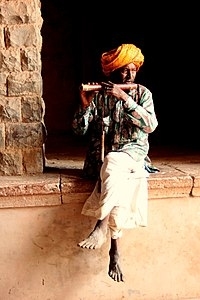
A bhilala is a tribe found in the Malwa and Nimar of the Central Provinces and in Central India. The total strength of the Bhilalas is about 150,000 persons, most of whom reside in the Bhopawar Agency, adjoining Nimar. Only 15,000 were returned from the Central Provinces in 1911. The Bhilalas are commonly considered, and the general belief may in their case be accepted as correct, to be a mixed caste sprung from the invading immigrant Rajputs with Bhils of the Central India hills. The original term was not improbably Bhilwala, and may have been applied to those Rajput chiefs, a numerous body, who conquered small estates in the Bhil country, or to those who took the daughters of Bhil chieftains to wife. The bhilalas in the central province are descendants of male Rajput with female Bhils and take the name of the Rajput clan to which they trace their origin. The bhilalas are landholders and live like mukhhiyas, darbar or thakur.
Systematic anthropological research of Bhilala communities began in the 1960s with a study of two of their regional subgroups, the Rathwa Bhilala and Barela Bhilala although they had been recorded as early as 1832.
In that year, John Malcolm used the term Bhilala to describe people of Bhil-Rajput descent and his usage has persisted, although in 1908 Michael Kennedy, another colonial administrator, preferred a more refined classification of such people as being any one of Baria, Dangi, Parmar, Rathwa and Rathod,. The co-mingling probably has its origins in the medieval period when Rajputs fleeing southwards from the Muslim invasion of India, conquered and took control of Bhil settlements, taking Bhil women for marriage.
Read More About Bhilala / Source
Bhil Meena

The Bhil Meena (also spelled Bhil Mina) are a tribal group found in the state of Rajasthan, India.
Mainly they are mixed tribe of tribal Meenas and Bhils.
Read More About Bhil Meena / Source
Bhunjia
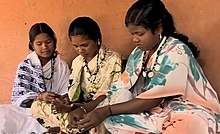
Bhunjias, are an ethnic group found in India mainly reside in Sunabeda plateau in Odisha and Chhattisgarh. They are mostly found in Nuapada district, which is roughly between 22° 55′ N and 21° 30′ N latitude and 82° 35′ E longitude. It was a part of Khariar Zamindari, which formed the eastern and the southeastern region of Raipur district of Chhattisgarh division in Central Province till 1 April 1936, when it was transferred to Odisha on its creation. It is now in Komna block of Nuapada district in Orissa. In Chhattisgarh they are found in Raipur district.
Read More About Bhunjia / Source
Damor
The Damor are an ethnic community found indigenous to the current state of Gujarat in India. They are also known as Damaria.
Read More About Damor / Source
Halba
Halba are a tribal community found in Chhattisgarh, Maharashtra, Madhya Pradesh and Orissa in India. They speak the Halbi language. They are primarily agricultural community.
Read More About Halba / Source
Kanwar
Kanwar or Kawar (meaning “crown prince”) is a surname of Rajputana, Nepalese and Indian individuals who are members of the Rajput and Jat caste. Kanwar also refers to a tribal community found in central India and Pakistan, mainly in the state of Chhattisgarh, with significant populations in neighboring parts of India and Pakistan.
Read More About Kanwar / Source
Tomar
Tomar (also called/spelt Tomara, Tanwar) is a clan, some members of which ruled parts of North India at different times. People belonging to the Tomara clan are found among the Rajputs of Northern India.
Most of their population is primarily concentrated in Delhi, Haryana-Torawati and Western UP. There exists 84 villages of Tomars in Western UP alone. Besides,few areas in Northern Madhya Pradesh like Morena, Bhind and Gwalior is referred to as “Tomargarh” meaning “Fort of Tomars” due to quite large population of Tomar Rajputs outside Delhi and its surrounding areas.
Read More About Tomar / Source
Kharwar
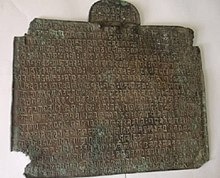
Kharwar is a community found in the Indian states of Uttar Pradesh, Bihar, Jharkhand, Chhattisgarh, Orissa and West Bengal.
Read More About Kharwar / Source
Kol
The Kol people referred to tribals of Chotanagpur in Eastern Parts of India. The Mundas, Oraons, Hos and Bhumijs were called Kols by British.It also refers to some tribe and caste of south-east Uttar Pradesh. They are mostly landless and dependent on forest produce to make a living, they are Hindus and are designated a Scheduled Caste under India’s system of positive discrimination. The tribe has several exogamous clans, including the Brahmin‚ Barawire, Bhil, Chero, Monasi, Rautia, Rojaboria‚ Rajput and Thakuria. They speak the Baghelkhandi dialect. Around 1 million live in Madhya Pradesh while another 5 lakh live in Uttar Pradesh.
Once spelled “Cole”, the swaths of land they inhabited in the 19th-century were called “Colekan”.
Korku
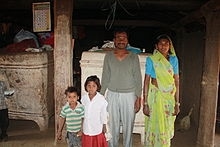
The Korku are a Munda ethnic group predominantly found in the Khandwa, Burhanpur, Betul and Chhindwara districts of Madhya Pradesh and adjoining areas near the Melghat Tiger Reserve of Maharashtra. They speak the Korku language, which is a member of the Munda languages and is written using Devanagari. They are classified as a Scheduled Tribe by the Indian government.
Read More About Korku / Source
Korwa
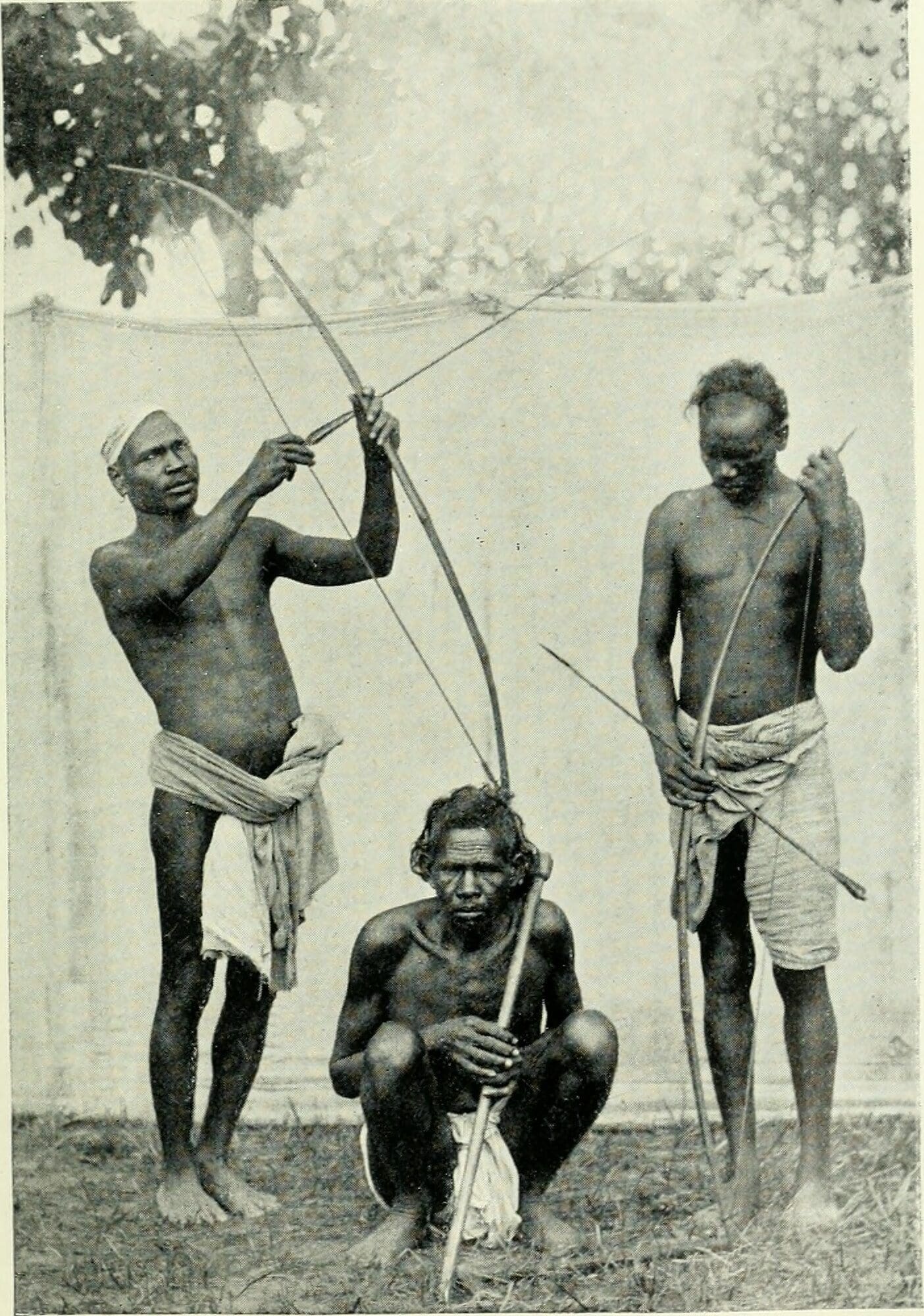
The Korwa people are a Munda, a Scheduled Tribe ethnic group of India. They live mainly on the border between Chhattisgarh and Jharkhand. A small number of Korwa are also found in the Mirzapur district of Uttar Pradesh.
The Government has implemented several facilities for them, such as roads to their settlements, boys hostels for education, providing agricultural aid, etc. They are a hunter-gatherer community.
The tribe is divided into several subdivisions: the Agaria, Dandh, Dil and Pahadi Korwas.
Read More About Korwa / Source
Musahar
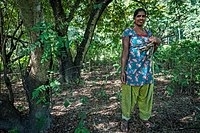
Musahar or Mushahar are a Dalit community found in the eastern Gangetic plain and the Terai. They are also known as Banbasi.The other names of the Musahar are Bhuiyan and Rajawar Their name literally means ‘rat-eater’ due to their main former occupation of catching rats, and there are many who are still forced to do this work due to destitution and poverty.
Read More About Musahar / Source
Majhwar
The Majhwar are a Scheduled Caste found in the state of Uttar Pradesh in India.The 2011 Census of India for Uttar Pradesh showed the Majhwar Scheduled Caste population as 23,123.
Read More About Majhwar / Source
Munda
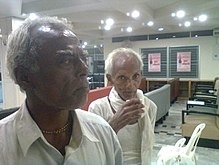
The Munda people are an Austroasiatic speaking ethnic group of India. They predominantly speak the Mundari language as their native language, which belongs to the Munda subgroup of Austroasiatic languages. The Munda are found mainly concentrated in the south and East Chhotanagpur Plateau region of Jharkhand, Odisha and West Bengal. The Munda also reside in adjacent areas of Madhya Pradesh as well as in portions of Bangladesh, Nepal, and the state of Tripura. They are one of India’s largest scheduled tribes. Munda people in Tripura are also known as Mura.
Read More About Munda / Source
Kisan
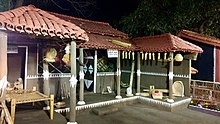
The Kisan or nagesia are a tribal group found in Odisha, West Bengal and Jharkhand. They are traditional farmers and a food gathering people. They speak Kisan, a dialect of Kurukh, as well as Odia and Sambalpuri. The tribe mainly lives in northwestern Odisha, in the districts of Sundergarh, Jharsuguda and Sambalpur. Other populations live in Malda district in western West Bengal and Latehar and Gumla districts of western Jharkhand.
Read More About Kisan / Source
Kurukh
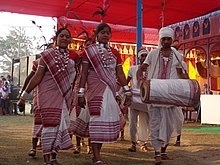
The Kurukh or Oraon, also spelt Uraon, or Dhangar (Kurukh: Karḵẖ and Oṛāōn) are a Dravidian speaking ethnolinguistic group inhabiting Chhotanagpur Plateau and adjoining areas – mainly the Indian states of Jharkhand, West Bengal, Odisha and Chhattisgarh. They predominantly speak Kurukh as their native language, which belongs to the Dravidian language family. In Maharashtra, Oraon people are also known as Dhangad or Dhangar.Traditionally, Oraons depended on the forest and farms for their ritual practices and livelihoods, but in recent times, they have become mainly settled agriculturalists. Many Oraon migrated to tea gardens of Assam, West Bengal and Bangladesh as well as to countries like Fiji, Guyana, Trinidad and Tobago and Mauritius during British rule, where they were known as Hill Coolies. They are listed as a Scheduled Tribe for the purpose of India’s reservation system.
Read More About Kurukh / Source
Pardhi
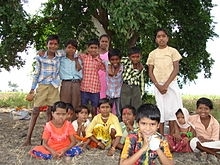
Pardhi is a Hindu tribe in India. The tribe is found mostly in Maharashtra and parts of Madhya Pradesh however small numbers can be found in Gujarat and Andhra Pradesh. The word Pardhi is derived from the Marathi (state language) word ‘Paradh’ which means hunting and Sanskrit word ‘papardhi’ which means hunting or the game to be hunted. In some parts of India Pardhis are known as Meywarees. They also have various other names like Advichincher, Phans Pardhi, Phanse Pardhi, Langoli Pardhi, Bahelia, Bahellia, Chita Pardhi, Shikari, Takankar, Takia Pardhi. Pardhi tribe is divided in groups like Vaghri Pardhi and Phase Pardhi. These are further divided into subgroups like Pal Pardhi, Gav Pardhi, Takankar, Takari. Widely found surnames among them include Chauhan (Chavan), Rathod and Solanke.
Read More About Pardhi / Source
Sahariya
The Sahariya are a community found in the Bundelkhand region of North India, which is administered by the states of Madhya Pradesh and Uttar Pradesh. They are also known as Rawat, Banrawat, Banrakha and Soarain.
Read More About Sahariya / Source
Santal
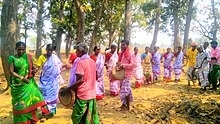
The Santal or Santhal are an Austroasiatic speaking
Munda ethnic group in South Asia. Santals are the largest tribe in the Jharkhand and West Bengal state of India in terms of population and are also found in the states of Odisha, Bihar and Assam. They are the largest ethnic minority in northern Bangladesh’s Rajshahi Division and Rangpur Division. They have a sizeable population in Nepal. The Santals speak Santali, the most widely spoken Munda languages of Austro-asiatic language family.
Read More About Santal / Source
Dhodia
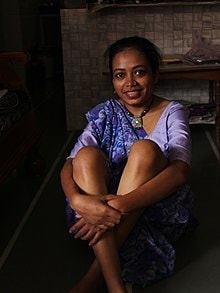
Dhodia are an Bhil Adivasi people who have been placed in the Indian communities recognition, under Schedule Tribes. The majority of the Dhodia tribes are located in the southern part of Gujarat (Navsari, Surat and Valsad districts), Dadra and Nagar Haveli and Daman and Diu, Madhya Pradesh, Maharashtra, Karnataka and Rajasthan. In Maharashtra, they are found mainly in the district of Thane. They speak Dhodia language, which has some unique words, as well as some words influenced by Gujarati and Marathi.
Read More About Dhodia / Source
Halpati
The Halpati are found mainly in the Gujarat state of India. Minor populations are also found in surrounding states and union territories. They are also known as Talvia or Talvi Rathode.
Read More About Halpati / Source
Bharwad
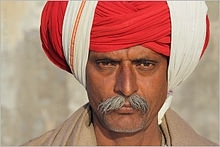
The Bharwad, also known as gadaria, are a Hindu caste found in the state of Gujarat in India, primarily engaged in herding livestock.
Read More About Bharwad / Source
Kokni
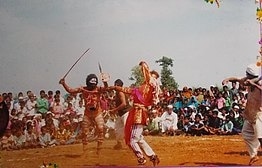
Kokni, Kokna, Kukna is an Indian Adivasi tribal community found in Sahyadri-Satpura Ranges of Maharashtra (mostly residing in Nandurbar and Dhule districts – Sakri, Navapur talukas) and in Gujarat (mostly residing in Ahwa-Dang, Navsari and Valsad districts) and is believed to have originated in the Konkan patti of Thane district. It is also known as Kokna, Kokni, and Kukna. There are various opinions regarding the origin of this tribe since no adequate research has been made. They are recognized as a scheduled tribe in the Indian states of Gujarat, Karnataka, Maharashtra and Rajasthan.
Read More About Kokni / Source
Naikda
The Naikda are a scheduled tribe found in the state of Gujarat in India. In Maharashtra the Naikda are also called Katkari, which is derived from the word kathori, which means animal skins.
Read More About Naikda / Source
Warli
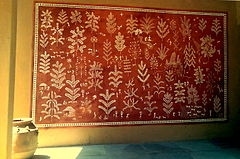
The Warli or Varli are an indigenous tribe (Adivasi) of western India, living in mountainous as well as coastal areas along the Maharashtra-Gujarat border and surrounding areas. They are considered by some to be a sub-caste of the Bhil tribe. The Warli have their own animistic beliefs, life, customs and traditions, and as a result of acculturation they have adopted many Hindu beliefs. The Warli speak the unwritten Varli language which belongs to the southern zone of the Indo-Aryan languages.
Waralis have sub castes such as Murde varli, Davar varali.
Read More About Warli / Source
Siddi
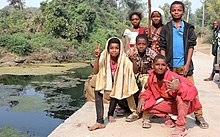
The Siddi (pronounced [sɪdːiː ]), also known as the Sheedi, Sidi, or Siddhi, or Habshi are an ethnic group inhabiting India and Pakistan. They are primarily descended from the Bantu peoples of the Zanj coast in Southeast Africa and Ethiopia, most whom arrived to the indian subcontinent through the Arab Slave Trade. Others arrived as merchants, sailors, indentured servants, and mercenaries. The Siddi population is currently estimated at around 850,000 individuals, with Karnataka, Gujarat and Hyderabad in India and Makran and Karachi in Pakistan serving as the main population centres. Siddis are primarily Muslims, although some are Hindus and others belong to the Catholic Church.Although often economically and socially marginalised as a community today, Siddis have played large roles in the politics of the subcontinent. The most famous Siddi, Malik Ambar, effectively controlled the Ahmadnagar Sultanate in the Deccan. He played a major role, politically and militarily, in Indian history by limiting the penetration of the Mughal power into the Deccan Plateau.
Read More About Siddi / Source
Barda
The Barda are tribal community found in the states of Gujarat and Maharashtra in India. They have scheduled tribe status. The community is also known as Adivasi or Khandeshi Bhil.
Read More About Barda / Source
Bamcha
The Bamcha are a Hindu Scheduled Tribe found in the state of Gujarat in India. They are also known as Bavcha and sometimes Bavecha.
Read More About Bamcha / Source
Bhil Garasia
The Bhil Garasia are a clan of the Bhil ethnic community and are found in the state of Rajasthan, India.
Read More About Bhil Garasia / Source
Charan
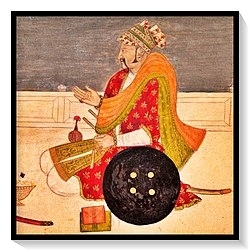
Charan (IAST: Cāraṇ; Sanskrit: चारण; Gujarati: ચારણ; Urdu: ارڈ; IPA: cɑːrəɳə) is a caste in South Asia natively residing in the Rajasthan and Gujarat states of India, as well as the Sindh and Balochistan provinces of Pakistan. Historically, Charans have been engaged in diverse occupations like bards, poets, historians, pastoralists, agriculturalists and also administrators, jagirdars and warriors and some even as traders.
Read More About Charan / Source
Chaudhri
Choudhury (Bengali: চৌধুরী); also: Choudhuri, Chaudhuri, Choudhuary, Chowdhury) is a sanatan dharma-based- hereditary title of honor which was used to denote only those Brahmins and Kshatriyas of Gour who are the actual Rulers of Gour and has royal bloodline.
Read More About Chaudhri / Source
Tadvi Bhil
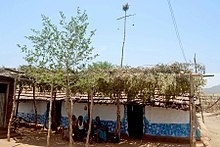
The Tadvi Bhil is an tribal community found in the states of Maharashtra, Gujarat, Madhya Pradesh and Rajasthan in India. They are from the larger Bhil ethnic group, and are a clan of it. They use the surname Tadvi or sometimes the name of their Kul or Gan; the Dhankas of Gujarat and Maharashtra use Tadvi or Tetariya.
Read More About Tadvi Bhil / Source
Gamit
The Gamit are Adivasi, or indigenous Bhil people of Gujarat, India. They are mainly found in Tapi, Surat, Dang, Bharuch, Valsad and Navsari districts of Gujarat and some parts of Maharashtra. They are included in state list of scheduled tribes.They are also known as Vasava (those who settled).
Read More About Gamit / Source
Katkari
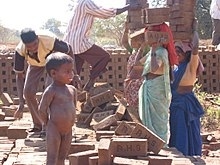
The Katkari also called Kathodi, are an Indian tribe from Maharashtra. They have been categorised as a Scheduled tribe. They are bilingual, speaking the Katkari language, a dialect of the Marathi-Konkani languages, with each other; they speak Marathi with the Marathi speakers, who are a majority in the populace where they live. In Maharashtra the Katkari have been designated a Particularly vulnerable tribal group (PVTG), along with two other groups included in this sub-category: the Madia Gond and the Kolam. In the case of the Katkari this vulnerability derives from their history as a nomadic, forest-dwelling people listed by the British Raj under the Criminal Tribes Act of 1871, a stigma that continues to this day.
Read More About Katkari / Source
Koli
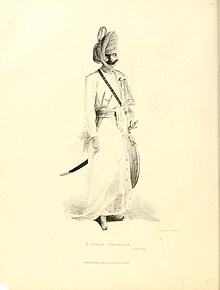
The Koli is an Indian caste found in Rajasthan, Himachal Pradesh, Gujarat, Maharashtra, Uttar Pradesh, Haryana, Karnataka, Odisha and Jammu and Kashmir states in India. Koli is an agriculturist caste of Gujarat but in coastal areas they also work as fishermen along with agriculture. In the beginning of 20th century, the Koli caste was recognised as a Criminal Tribe under Criminal Tribes Act by British Indian government because of their anti-social activities during World War I.
The Koli caste forms the largest caste-cluster in Gujarat and Himachal Pradesh, comprising 24% and 30% of the total population in those states respectively.
Kunbi

Kunbi (alternatively Kanbi , Kurmi ) is a generic term applied to castes of traditional farmers in Western India. These include the Dhonoje, Ghatole, Hindre, Jadav, Jhare, Khaire, Lewa (Leva Patil), Lonare and Tirole communities of Vidarbha. The communities are largely found in the state of Maharashtra but also exist in the states of Madhya Pradesh, Gujarat, Karnataka, Kerala and Goa. Kunbis are included among the Other Backward Classes (OBC) in Maharashtra.Most of the Mavalas serving in the armies of the Maratha Empire under Shivaji came from this community. The Shinde, Bhosale, Pawar and Gaekwad dynasties of the Maratha Empire are originally of Kunbi origin. In the fourteenth century and later, several Kunbis who had taken up employment as military men in the armies of various rulers underwent a process of Sanskritisation and began to identify themselves as Marathas. The boundary between the Marathas and the Kunbi became obscure in the early 20th century due to the effects of colonisation, and the two groups came to form one block, the Maratha-Kunbi.
Tensions along caste lines between the Kunbi and the Dalit communities were seen in the Khairlanji killings, and the media have reported sporadic instances of violence against Dalits. Other inter-caste issues include the forgery of caste certificates by politicians, mostly in the grey Kunbi-Maratha caste area, to allow them to run for elections from wards reserved for OBC candidates. In April 2005, the Supreme Court of India ruled that the Marathas are not a sub-caste of Kunbis.
Read More About Kunbi / Source
Padhar
The Padhar (Sindhi: پڌڙ) are a Hindu caste found in the state of Gujarat in India.
Read More About Padhar / Source
Phase Pardhi
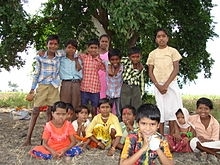
Pardhi is a Hindu tribe in India. The tribe is found mostly in Maharashtra and parts of Madhya Pradesh however small numbers can be found in Gujarat and Andhra Pradesh. The word Pardhi is derived from the Marathi (state language) word ‘Paradh’ which means hunting and Sanskrit word ‘papardhi’ which means hunting or the game to be hunted. In some parts of India Pardhis are known as Meywarees. They also have various other names like Advichincher, Phans Pardhi, Phanse Pardhi, Langoli Pardhi, Bahelia, Bahellia, Chita Pardhi, Shikari, Takankar, Takia Pardhi. Pardhi tribe is divided in groups like Vaghri Pardhi and Phase Pardhi. These are further divided into subgroups like Pal Pardhi, Gav Pardhi, Takankar, Takari. Widely found surnames among them include Chauhan (Chavan), Rathod and Solanke.
Read More About Phase Pardhi / Source
Rabari
The Rabari people (also known as Desai, Rabari, Raika, and Dewasi people) are an ethnic group from the Rajasthan also found in Gujarat Kutch region.
Read More About Rabari / Source
Vagri
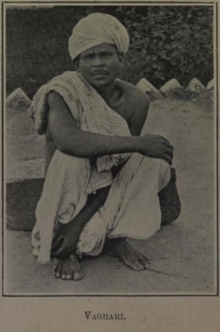
The Vagri (Vaghri, Waghri or Baghri) are a tribe and caste found in the states of Rajasthan and Gujarat in India the province of Sindh in Pakistan.
Read More About Vagri / Source
Bodh
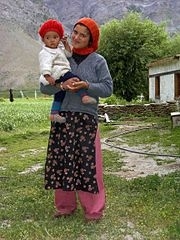
The Bodh people, also known as Khas Bhodi, are an ethnic group of Himachal Pradesh, India. They are found in Lahaul tehsil, Lahaul and Spiti district, predominantly in the Bhaga and Chandra valleys, but also to a lesser extent in Pattani valley, Miyar Valley, in the upper reaches of Pangi, Himachal Pradesh and Paddar valley, Jammu and Kashmir. Their religion is predominantly Buddhism with animistic and shaivite practices. Caste wise, they are identified as Rajput, Thakur or Kshetri although caste rules are not as rigid as in the plains. Historically, 3-4 prominent families of the area were accorded the titles of Rana, Wazir or Thakur by the kings of Chamba, Kullu or Ladakh for the purpose of general administration and revenue collection.
They have a mix of martial traditions alongside shamanistic and lamaistic beliefs. Certain families/clans used to be significant zamindars/jagirdars. There is a significant cultural and ethnic mixing due to the region passing under the hegemony of rulers of Ladakh, Kullu and Chamba over the last many centuries. The language spoken differs from valley to valley with some dialects being very close to Kumaoni, while others are mixed with Chambyali and Dari.
They are progressive, enterprising, honest and were involved in the centuries old India-Tibet-Nepal trading routes.
Organized into family groups/clans with clan names ending in the suffix “-pa” (eg – Barpa, Karpa, Tholakpa, Cherjipa, Gerumshingpa, Khingopa) similar to the “-ta” suffix (eg- Khimta, Zinta, Brakta, Bragta, etc.)found in the family/clan names of the Simla area.
Gaddis
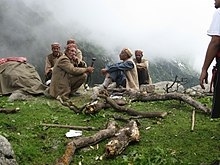
The Gaddi is a semi-pastoral Indo-Aryan ethno-linguistic tribe living mainly in the Indian states of Himachal Pradesh and Jammu and Kashmir.
Read More About Gaddis / Source
Gurjar
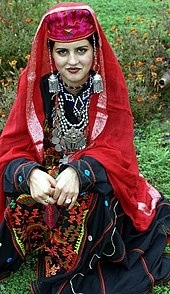
Gurjar or Gujjar (also transliterated as Gujar, Gurjara and Gujjer) is an ethnic nomadic, agricultural and pastoral community, spread mainly in India, Pakistan and Afghanistan, divided internally into various clan groups. They were traditionally involved in agriculture and pastoral and nomadic activities and formed a large homogeneous group. The historical role of Gurjars has been quite diverse in society, at one end they have been founder of several kingdoms, dynasties, and at the other end, some are still nomads with no land of their own.The pivotal point in the history of Gurjar identity is often traced back to the emergence of a Gurjara kingdom in present-day Rajasthan during the Middle Ages (around 570 CE). It is believed that the Gurjars migrated to different parts of the Indian Subcontinent from the Gurjaratra. Previously, it was believed that the Gurjars had migrated earlier on from Central Asia as well, however, this view is generally considered to be speculative. According to B.D. Chattopadhyaya, historical references speak of Gurjara warriors and commoners in North India in the 7th century CE, and mention several Gurjara kingdoms and dynasties. However, according to Tanuja Kothiyal, the historical image of Gujar is of ‘ignorant’ herders though historical claim of Gurjar past also associate them with Gurjara-Pratiharas. She cites a myth that any Rajput claim Gurjars may have comes through Rajput marrying a Brahmin woman, and not through older Kshatriya clan. However, she states that the historical process suggests the opposite: that Rajputs emerged from other communities, such as Gujars, Jats, Raikas etc. The Gurjaras started fading way from the forefront of history after 10th century CE. Thereafter, several Gurjar chieftains and upstart warriors are mentioned in history, who were rather petty rulers in contrast to their predecessors. “Gujar” and “Gujjar” were quite common during the Mughal era, and documents dating from the period mention Gujars as a “turbulent” people.
The Indian states of Gujarat and Rajasthan were known as Gurjaradesa and Gurjaratra for centuries prior to the arrival of the British power. The Gujrat and Gujranwala districts of Pakistani Punjab have also been associated with Gurjars from as early as the 8th century CE, when there existed a Gurjara kingdom in the same area. The Saharanpur district of Uttar Pradesh was also known as Gurjargadh previously, due to the presence of many Gujar zamindars, or land holding farmer class, in the area.Gurjars are linguistically and religiously diverse. Although they are able to speak the language of the region and country where they live, Gurjars have their own language, known as Gujari. They variously follow Hinduism, Islam, and Sikhism. The Hindu Gujars are mostly found in Indian states of Rajasthan, Haryana, Madhya Pradesh, Punjab Plains and Maharashtra. Muslim Gurjars are mostly found in Punjab, Pakistan where they make up 20% of the population, mainly concentrated in Northern Punjabi cities of Gujranwala, Gujrat, Gujar Khan, Jehlum and Lahore, Afghanistan and Indian Himalayan regions such as Jammu & Kashmir, Himachal Pradesh and Garhwal and Kumaon divisions of Uttarakhand.
Read More About Gurjar / Source
Jad
The Jad people are a community found in Himachal Pradesh and Uttarakhand.
They are also known as Lamba and Khampa.
Kanaura
The Kanaura are a tribal community found in Kinnaur district of Himachal Pradesh. They are also known as Kinnara.
Read More About Kanaura / Source
Lahaul
The Lahaula are a tribal community found in Lahaul and Spiti district of Himachal Pradesh.Lahaule tribes of Himachal Pradesh are of mixed origination and are the inhabitants of Lahaul.
Mostly this Lahaule tribal community is found in several regions like Lahaul Valley, Pattan, Chamba-Lahaul, and lower Mayar valleys.
The term ‘Lahule’ connotes the inhabitants of Lahaul. This tribal people are said to be originated from the aboriginal Munda tribe and Tibetans.
The language of the Lahaule tribal community is In fact there are alternative names of this language, which are popular amongst the Lahaule tribal community.
Manchati, Manchad, Patni, Chamba, Chamba Lahuli, Lahuli, Swangla, Changsapa Boli are some of the alternative names of their language. Apart from these, there are certain dialects of this language, which are also prevalent in Lahaule tribal groups.
Though the people of the Lahaule tribal community are basically agrarian, some of them are also engaged in trade. They export wheat, barley, ‘Kuth’ which is a herb, to Kolcuta.
Their society is ramified in upper and lower classes namely Brahmins, Thakurs, Lohars and Dagis.
Marriage in the same clan is allowed among the Lahaule tribal community. Just like many other tribal communities of the whole of the Indian subcontinent, this Lahaule tribal community too is oriented to religious customs and beliefs.
Most of the people of this community are the followers of Hinduism and Buddhism. Hindu and Buddhist visit Trilokinath temple often.
These people prefer to wear colourful attires and ornaments which are a major part of their costumes. That the culture and the tradition of this Lahaule tribal community are quite exquisite is revealed from the fact that it has a plethora of dance forms, music, fairs and festivals.
Read More About Lahaul / Source
Pangwala
The Pangwala is a tribal community predominant in the Pangi valley of Chamba district in Himachal Pradesh.
Read More About Pangwala / Source
Swangla
The Swangla is a tribal community found in Lahaul and Spiti district of Himachal Pradesh, India. They are primarily settled in the pattan region of the Lahaul sub- division. As per Census of India, the population of Swangla Tribe stood at 9,630 (Males 4829 and females 4801).
Read More About Swangla / Source
Bakarwal

The Bakarwal (also Bakkarwal, Bakharwal, Bakrawala and Bakerwal) are a nomadic ethnic group, who along with Gujjars are listed as Scheduled Tribes in the Indian Union Territory of Jammu and Kashmir and Ladakh since 1991.As a nomadic tribe they spread over a large part starting from Pir Panjal to Zanskar located in the Himalayan mountains of India to the Hindukush mountains of Afghanistan. They are goatherders and shepherds at large and seasonally migrate from one place to another with their herds. They are found in the Indian union territory of Jammu and Kashmir and Ladakh and in the Afghan province of Nuristan.
Read More About Bakarwal / Source
Balti
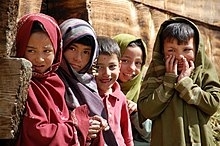
The Baltis are an ethnic group of Tibetan descent who are native to the Pakistani-administered territory of Gilgit−Baltistan and in the Indian-administered territory of Ladakh, predominantly in the Kargil district with smaller concentrations present in the Leh district. Outside of the Kashmir region, Baltis are scattered throughout Pakistan, with the majority of the diaspora inhabiting prominent urban centres such as Lahore, Karachi, Islamabad and Rawalpindi.
Read More About Balti / Source
Beda
The Beda people are a community of the Indian UT of Ladakh. They are mostly found in different parts Ladakh , where they practise their traditional occupation of musicianship. They are predominantly followers of the Muslim faith, although some are Buddhists. According to some scholars, they are an untouchable group, although others think that the situation is more nuanced.
Boto
The Bota or Boto people are a tribal community found in Union territory of Ladakh. They are the third largest tribal community after Gujjars and Bakarwals in Jammu and Kashmir. According to 2011 Census of India, their population stands at 91,495. They have a male to female sex ratio of 1020 and child sex ratio of 957. They boast a literacy rate of 70.3, which is higher than state tribal literacy rate of 50.6. Bots primarily follow Buddhism.
Brokpa
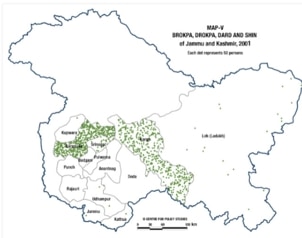
Brokpa, Drokpa, Dard and Shin are distinct tribes that are included under a single Scheduled Tribe in the Indian constitution. They speaks Dardic languages. In Jammu and Kashmir, these tribes are mostly found in the Kargil and Baramulla districts.
The 2001 Census of India counted 51,957 people in these tribes.
Of these, 26,066 people lived in Baramulla, 23,418 in Kargil, 1,002 in Leh and 1,199 in Srinagar.
Of the 48,400 counted in 2011, 45,100 were Muslim, 3,144 were Buddhist and 133 were Hindu. The demographic numbers of “Brokpa, Drokpa, Dard, and Shin” Tribes are added together in the Census of India.These group are jointly referred as Dards .
Baramullah
Dard-Shin tribe or Shina people
LadakhDrokpa or Shin Tribe In Drass valley
Brokpa or Minaro in Dha hanu region
Read More About Brokpa / Source
Garra
The Garra people (sometimes spelled Gara) are a community found in the Indian state of Jammu and Kashmir.
Read More About Garra / Source
Mon
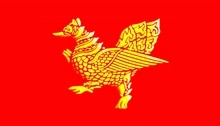
The Mon (Mon: ဂကူမည်; Burmese: မွန်လူမျိုး, pronounced [mʊ̀ɰ̃ lù mjó]; Thai: มอญ, pronounced [mɔ̄ːn] listen ) are an ethnic group who inhabit Lower Myanmar’s Mon State, Kayin State, Kayah State, Tanintharyi Region, Bago Region, the Irrawaddy Delta, and several areas in Thailand (mostly in Pathum Thani province, Phra Pradaeng and Nong Ya Plong). There are also small numbers of Mon people in West Garo Hills, calling themselves Man or Mann, who also came from Myanmar to Assam, ultimately residing in Garo Hills. The native language is Mon, which belongs to the Monic branch of the Mon-Khmer language family and shares a common origin with the Nyah Kur language, which is spoken by the people of the same name that live in Northeastern Thailand. A number of languages in Mainland Southeast Asia are influenced by the Mon language, which is also in turn influenced by those languages.The Mon were one of the earliest to reside in Southeast Asia, and were responsible for the spread of Theravada Buddhism in Mainland Southeast Asia. The civilizations founded by the Mon were some of the earliest in Thailand as well as Myanmar and Laos. The Mon are regarded as a large exporter of Southeast Asian culture. Historically, many cities in Myanmar, Thailand, and Laos today, including Yangon, Bangkok, and Vientiane were founded either by the Mon people or Mon rulers.
Nowadays, the Mon are a major ethnic group in Myanmar and a minor ethnic group in Thailand. The Mons from Myanmar are called Burmese Mon or Myanmar Mon. The Mons from Thailand are referred as Thai Raman or Thai Mon. The Mon dialects of Thailand and Myanmar are mutually intelligible.
Purigpa
The Purigpa are a community found in Kargil district, Ladakh, India. Out of 39 thousand Purigpas, 38 thousand are Muslim. The remaining few of them are mostly Buddhists. In 2011, there were 992 Buddhists among the Purigpas.
Read More About Purigpa / Source
Sippi
Sippi is a semi-town near Daporijo in Upper Subansiri district of Arunachal Pradesh it is inhabited by mostly Tagin’s of central zone, Sippi also has plain parts which is surrounded by two rivers namely Subansiri, sippi ( Sippi comes under Sigin-I of Dapriojo Circle and it is also populated with people from chetam circle)
Read More About Sippi / Source
Chik Baraik
Chik Baraik (also Chik, Chikwa, Baraik and Badaik) is a community found in Indian State of Jharkhand, Chhattisgarh, Odisha. They were traditionally Weaver.
Read More About Chik Baraik / Source
Ravula
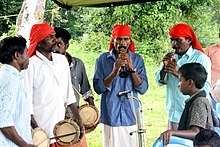
The Ravula (Adyar in Malayalam, Yerava in Kannada) are a tribal community in Karnataka and Kerala. Their common language is known as the Ravula language. They live predominantly the Kodagu district of Karnataka along with its adjacent regions in the districts of Kannur and Wayanad in Kerala. Most of them are agricultural workers and are in the process of detribalization. It is believed that they were agricultural serfs in the past. During the annual festival at the Valliyurkkavu temple in Mananthavady, Wayand, the Adyar people gather to trade services with landlords.Their settlements are called ‘Kunju.’ They are monogamous, and mostly practice negotiated marriage, although there are several elopement marriages among them.
Currently, Ravula is very backward. They are mostly agricultural laborers in coffee plantations and tea estates, although some are employed by the Forest Department or in other occupations. Yerevan tribals believe in magic, and are animists, although they still perform worship to Hindu deities like Chamundeswariamma and Kaveriamma. They have their own system of medicines.
Read More About Ravula / Source
Aranadan
The Aranadan are Adivasi, a designated Scheduled Tribe in the Indian state of Kerala. They are an aboriginal tribe whose traditional way of life has been based on hunting and gathering.
Read More About Aranadan / Source
Eravallan
The Eravallan are Adivasi, a designated Scheduled Tribe in the Indian state of Kerala. They are an aboriginal tribe whose traditional way of life has been based on hunting and gathering.Eravallan people believe in Hinduism and speak the Eravallan language.
Read More About Eravallan / Source
Irula
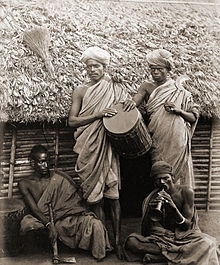
Irula, also known as Iruliga, are a Dravidian ethnic group inhabiting the Indian states of Tamil Nadu, Kerala and Karnataka. A scheduled tribe, their population in this region is estimated at around 200,000 people. People of Irula ethnicity are called Irular, and speak Irula, which belongs to the Dravidian family.
Read More About Irula / Source
Kanikkaran
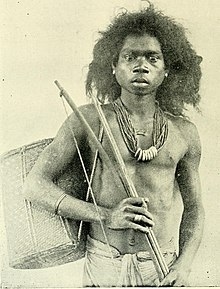
Kanikkaran are a tribal community found in the southern parts of Kerala and Tamil Nadu states in India. According to 2011 census there are 24,000 Kanikkars, living in several districts of Kerala and Tamil Nadu. They dwell in forests or near to forests in Thiruvananthapuram and Kollam in Kerala, and Kanyakumari and Tirunelveli districts in Tamil Nadu.
Though they cultivate everything and make agriculture as the main profession, they have a special liking for fishing and hunting. Literacy is estimated to be around 53.84%. Kaanikkar Nritham is a form of group dance performed as a rural offering.The Kanikkars are semi-nomadic, living in temporary huts of bamboo and reeds. These are generally situated on hillsides. Previously they practiced slash-and-burn cultivation, but this was banned in the late 19th century, who assigned certain areas of the forest for their exclusive use. Some work on planter estates, others in manufacturing bows and arrows. They shoot heated arrows at elephants from huts in the trees when watching over crops. These huts are easily constructed, with bamboo walls and a thatched leaf roof. They are built 50 feet above the ground, and are connected to the ground with a ladder. The community also collects minor forest produce, especially honey. The Kanikkars climb ropes at the base of cliffs where nests are located, and collect honey and put it in baskets.
Subdivisions of Kanikkars are known as Ilams, or families: 5 are Machampi (brother-in-law ilams), who are endogamous, and 5 are Annantampi (brother ilams), who are exogamous.
The Kanikkars live in communities under a Muttakani, a headman. They inherit property father-to-son, but a share of the property goes to a nephew.
Their chief deity is Sasta, but the community worships a series of other forest deities. They worship their gods twice a year. On the morning of the festival people take plantains and rice to the headman’s house. Most of the rice is husked and ground to flour by the boys and men, and is then taken to a clearing where a row of plantain leaves is laid. A Kanikkar spreads rice over these leaves, and above puts plantains. An officiating priest burns incense, and all pray for goodwill of their fields. When the land is first cleared for cultivation, the headman is given rice and coconuts and clears part of the field.
Read More About Kanikkaran / Source
Majhi

Musahar or Mushahar are a Dalit community found in the eastern Gangetic plain and the Terai. They are also known as Banbasi.The other names of the Musahar are Bhuiyan and Rajawar Their name literally means ‘rat-eater’ due to their main former occupation of catching rats, and there are many who are still forced to do this work due to destitution and poverty.
Read More About Majhi / Source
Saharia
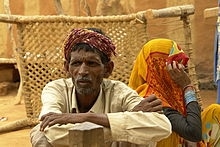
The Sahar, Sehariya, or Sahariya are an ethnic group in the state of Madhya Pradesh, India. The Saharias are mainly found in the districts of Morena, Sheopur, Bhind, Gwalior, Datia, Shivpuri, Vidisha and Guna districts of Madhya Pradesh and Baran district of Rajasthan.They are classified as Particularly vulnerable tribal group.
Read More About Saharia / Source
Sora
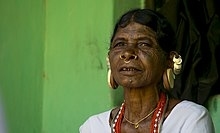
The Sora (alternative names and spellings include Saora, Saura, Savara and Sabara) are a Munda ethnic group from eastern India. They live in southern Odisha and north coastal Andhra Pradesh.
The Soras mainly live in Gajapati, Rayagada and Bargarh districts of Odisha. They are also present in Srikakulam, Vizianagaram and Visakhapatnam districts. In the census, however, some Soras are classified under Shabar or Lodha, the name for another very different Munda tribe. They inhabit blocks of Gunupur, Padmapur and Gudari. Their highest concentration is found in the Puttasingi area, approximately 25 km away from Gunupur NAC. Although, they are close to the assimilation process, yet some interior GPs like Rejingtal, Sagada and Puttasingi have Soras who still retain their traditional tribal customs and traditions.
They are known by various names such as Savara, Sabara, Sora, and Soura. They are concentrated in parts of Gunupur adjoining to the blocks of Gumma, Serango of Gajapati district. The Soras speak Sora, a Munda language. However, written language in Sora is not followed by all. They practice shifting cultivation, with a few gradually taking up settled agriculture.
They are of medium or short stature. The Savara villages consist of houses with mud walls and sedge grass roofs, usually situated in foothills. The adult males dress with a gavancha and the women with saris. They are also sometimes called Lanjia Souras due to their dress pattern of wearing a loin cloth hanging from behind and which could be mistakenly identified as a tail by a stranger.
They are endogamous and the clan, although absent, is related to Birinda, which is exogamous. Families are nuclear although joint or extended families are also found. Marriages are made by bride capture, elopement, and by negotiations.
The Sora people are a dwindling jungle tribe with a distinctive shamanic culture. According to an article in Natural History, “a shaman, usually a woman, serves as an intermediary between the two worlds [of the living and the dead]. During a trance, her soul is said to climb down terrifying precipices to the underworld, leaving her body for the dead to use as their vehicle for communication. One by one the spirits speak through her mouth. Mourners crowd around the shaman, arguing vehemently with the dead, laughing at their jokes, or weeping at their accusations.”
Khairwar

Kharwar is a community found in the Indian states of Uttar Pradesh, Bihar, Jharkhand, Chhattisgarh, Orissa and West Bengal.
Read More About Khairwar / Source
Kol
The Kol people referred to tribals of Chotanagpur in Eastern Parts of India. The Mundas, Oraons, Hos and Bhumijs were called Kols by British.It also refers to some tribe and caste of south-east Uttar Pradesh. They are mostly landless and dependent on forest produce to make a living, they are Hindus and are designated a Scheduled Caste under India’s system of positive discrimination. The tribe has several exogamous clans, including the Brahmin‚ Barawire, Bhil, Chero, Monasi, Rautia, Rojaboria‚ Rajput and Thakuria. They speak the Baghelkhandi dialect. Around 1 million live in Madhya Pradesh while another 5 lakh live in Uttar Pradesh.
Once spelled “Cole”, the swaths of land they inhabited in the 19th-century were called “Colekan”.
Koya
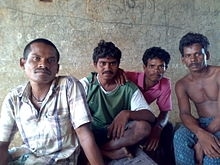
Koya are an Indian tribal community found in the states of Andhra Pradesh, Telangana, Chhattisgarh, and Odisha. Koyas call themselves Koitur in their dialect. The Koyas speak the Koya language, also known as Koya basha, which is a Dravidian language related to Gondi.Koyas are commonly referred to as Koi, Koyalu, Koyollu, Koya Doralu, Dorala Sattam, etc. Koya tribes can be further divided into Koya, Doli Koya, Gutta Koya or Gotti Koya, Kammara Koya, Musara Koya, Oddi Koya, Pattidi Koya, Rasha Koya, Lingadhari Koya (ordinary), Kottu Koya, Bhine Koya, Raja Koya, etc.
Aimol
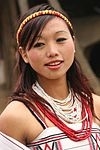
The Aimol people is an ethnic group living mainly in Manipur and in parts of Nagaland and Assam in India. They speak Aimol language which is a Tibeto-Burman language.
They practice slash-and-burn agriculture and are primarily Christian.
Aimol identity is contentious as they are influenced by Kuki-Chin-Mizo groups. Their language is classified as Kuki-Chin-Mizo languages.
Read More About Aimol / Source
Anāl
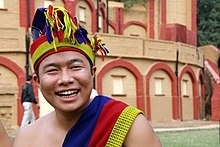
The Anāl (also spelled as Anaal) are some of the oldest settlers of the present day Manipur. They belong to the Naga tribe native to Manipur state in North-East India and part of Myanmar. The name “Anal” was given by the Meitei people of Manipur valley. They are listed as a Scheduled Tribe, in accordance with The Scheduled Castes and Scheduled Tribes Orders (Amendment) Act, 1976 Indian Constitution. The Anāl tribe is one of the ‘sixty six Naga tribes’ of the Naga ancestral homeland. The members of this tribe are found both in India and Myanmar. In India, they are situated in the States of Manipur and Nagaland but mostly concentrated in the former. In the State of Manipur, the Anāl Naga population concentrated in Chandel and a few Anāl villages are located in its neighbouring districts, Churachandpur district has about three villages and Thoubal district has one or two.The Anāls in Myanmar live in the Sagaing sub-division. The Anāl population in this part has been dwindling. At present, there are three Anāl villages, ‘Nga Kala, Napalun and Haika’. Formerly the Anāls had no problem to move or visit Anāl areas now in Myanmar and vice versa. However, with the demarcation of boundaries, they came under two distinct units and the consequent restriction imposed on the movement of the people of both sides, the Anāls had to stop such free movement between them. Consequently, there has not been any interaction between the members of the same tribe now existing under two different countries. The Anāl community is one of the oldest inhabitants of the hill areas in Manipur state. The archaeological findings at Chakpikarong also point it. According to Census of India, the Anāl population was 94,242 and 1991 census placed as 82,693.The Anāl Naga is recognized as a tribe in Manipur since 1951. This recognition of Anāl tribe was done by Rochunga Pudaite who met the Prime Minister Jawaharlal Nehru in Delhi in 1951 and requested him to give Scheduled Tribe recognition to the Hmar tribe of Northeast India. The PM then asked him if he knew of the existence of other tribes which had not been included in the list. Rochunga then added the tribes of Anāl, Kom, Paite, Vaiphei, Ralte, Chothe and others, thus paving the way for their recognition. However, it was only after the Scheduled Tribes Reorganisation in 1956 that all the aforementioned tribes were recognised by the Manipur government. Therefore, Anāl Naga is one of 33 tribes in Manipur. The Anāl Language falls under Tibeto-Burman languages family. Anāls are recognised as one of the “Naga” tribes of Manipur and part of the List of Naga tribes by the state government of Manipur.
Angami Naga

The Angamis are a major Naga ethnic group native to the Northeast Indian state of Nagaland. The Angami Nagas are predominantly settled in Kohima District, Chümoukedima District and Dimapur District of Nagaland and are also recognized as one of the ethnic groups in the state of Manipur. The Angamis are divided into four regions namely Chakhro Angami, Northern Angami, Southern Angami and Western Angami. The now separated Chakhesangs were previously known as the Eastern Angamis.
Read More About Angami Naga / Source
Chiru
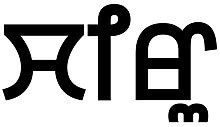
Chiru people is a Naga ethnic group that mostly resides in Manipur and some in Assam, India. They are listed as a Scheduled Tribe, in accordance with The Scheduled Castes and Scheduled Tribes Orders (Amendment) Act, 1976 Indian Constitution.
Read More About Chiru / Source
Chothe
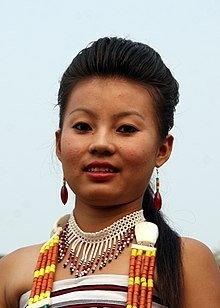
The Chothe tribe is one of the oldest tribes found in the state of Manipur, India. Some historians and anthropologists have erroneously recorded the Chothe as the Purum of India. Some Chothe are called Chawhte in Mizoram and they are part of Mizo in Mizoram. Chothe tribe are Old-Kukis. They are listed as a Scheduled Tribe, in accordance with The Scheduled Castes and Scheduled Tribes Orders (Amendment) Act, 1976 Indian Constitution.
Read More About Chothe / Source
Gangte
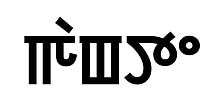
Gangte is an ethnic group mainly living in the Indian state of Manipur. They belong to the Zo people and are parts of the Kuki or under Mizo tribe and are recognised a tribe of Manipur, India. They are also indigenous inhabitants of Mizoram, Assam and Myanmar, and a recognised tribe under the Indian Constitution. With a population of approximately 40,000 worldwide (as of 2018), they primarily live in Manipur’s southern Churachandpur district and neighbouring states of Meghalaya, Mizoram and Assam.
Gangte also live in Chin State and Kabaw Valley of Myanmar.
Other clans or ethnic people in this group are the Thadou, Lushei, Paite, Vaiphei, Simte, Zou and any other Chin-Kuki-Mizo tribes.
Gangte is also the name of the language spoken by the Gangte people of northeast India and Burma, one of the northern Chin, Kuki and Mizo languages of the Tibeto-Burman family.
Read More About Gangte / Source
Kabui
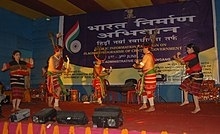
The Rongmei (also known as Kabui) are one of the major indigenous communities a part of the Naga tribes of North-East India. The Rongmei Naga are a scheduled tribe under the Constitution of India. The Rongmei have a rich culture, customs and traditions. They share similarity with their kindred tribes of Zeme, Liangmai and Inpui which together are known as Zeliangrong.
Read More About Kabui / Source
Kacha Naga
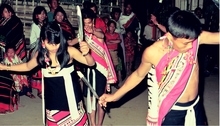
The Zeme people, also known as the Zeme Nagas are the Naga tribe from North Eastern India. Their villages are mostly spread across Peren district in Nagaland; Tamenglong district, Senapati district in Manipur and Dima Hasao district (NC hills) in Assam.
Read More About Kacha Naga / Source
Koirao
The Thangals are one of the indigenous Naga tribes restricted to the Senapati district of the state of Manipur in north-east India. Presently there are 13 Thangal villages. They are found in eleven hill villages of the Senapati District. Mapao Thangal, Thangal Surung, Makeng Thangal, Tumnoupokpi, Tagaramphung (Yaikongpao), Ningthoupham and Mayakhang are some of the bigger villages.
They speak the Thangal language, which resembles Maram, and Rongmei. They are Mongoloid in appearance. They are close-knit and live in hill villages mostly located along the National Highway No. 2. Traditionally Thangals are farmers cultivating a range of crops such as rice and pulses; vegetables such as brinjal, potatoes, tomatoes, chillies, cucumber and mustard leaf; fruits such as mango, papaya, plantain, pomegranate; and fruits locally known as tii. The agricultural implements that these Thangal tribes use to a great extent are the adze, sickle, axe, plough, and yoke.
Some villages practice jhum, or slash and burn agriculture. Animal husbandry and poultry farming are also the occupations which make them self-sufficient. Women are engaged in various cottage industries, especially weaving.
Read More About Koirao / Source
Koireng
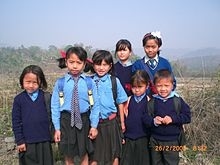
The Koireng people are one of the indigenous peoples inhabiting Manipur in North-East India. They have a shared common ancestry, history, cultural traits, folklore and dialects with their kindred people like Aimol and Kom.
Read More About Koireng / Source
Kom
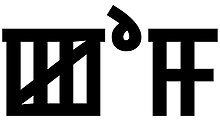
The Kom are one of the oldest among tribes who had settled in Manipur alongside the Meiteis (with reference to the Khamba Thoibi epic folklore) and they are defined later by British Indian government as Naga in their land records (administratively) but later after the entry of kuki from Burma during 1847, the anthropologist and historian considered them linguistically a kin to chin-kuki-mizo group. They are mainly found in Manipur of North-East India.
Koms belong to kindred Chin – Kuki Mizo tribes. Even though they are referred as “Kom”, among themselves they refer to themselves as Kakom. Kom-rem consist of six subtribes: Chiru, Aimol, Kharam, Purum, Koireng and Kom. Kom-rem are found in the Northeastern states of Manipur and Tripura. The majority of the Kom population reside in Manipur. They are found in almost all the districts of Manipur and concentrated mainly in the districts of Churachandpur, Bishnupur, Chandel, Kangpokpi, Tengnoupal, Thoubal, Kakching and Senapati.
According to the 2001 Census of India, the population of Kom is 14,602.
Lamkang
The Lamkang tribe are one of the Naga tribes that mostly resides in Manipur, India and some in Sagaing Region, Myanmar. They are listed as a Scheduled Tribe, in accordance with The Scheduled Castes and Scheduled Tribes Orders (Amendment) Act, 1976 Indian Constitution. They share close cultural and linguistic affinity with the Anal Naga tribe.
Read More About Lamkang / Source
Mao
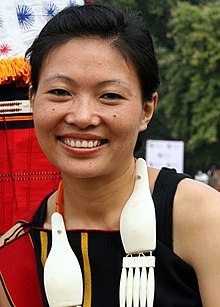
The Mao are one of the major ethnic groups constituting the Nagas, a group of ethnic groups spread over the easternmost part of India. The Maos inhabit the northern part of Manipur and some parts of Nagaland States of India bounded by similar Naga ethnic groups such as the Angamis and Chakhesangs to the north, the Maram Nagas and Zeme Nagas to the west and south, and the Tangkhuls and Poumeis to the east. The Maos are also known as Memei or Ememei, in their own language. The term ‘Mao’ also refers to the area where most of the old and original villages are situated, as distinguished from the newer settlements in an expanded area of their habitation.
Marma
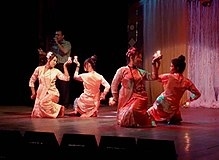
The Marma (Burmese: မရမာလူမျိုး), formerly known as Moghs or Maghs, are the second-largest ethnic community in Bangladesh’s Chittagong Hill Tracts, primarily residing in the Bandarban, Khagrachari and Rangamati Hill Districts. Some Marmas live in Bangladesh’s coastal districts of Cox’s Bazar and Patuakhali, while others live in Tripura, India and Myanmar. There are over 210,000 Marmas living in Bangladesh. Since the 16th century, the Marma have considered the Bengal’s Chittagong Hill Tracts their home, where they have established the Bohmong and Mong Circles (chiefdoms).
Read More About Marma / Source
Maring
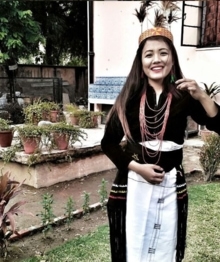
The Maring are one of the oldest tribe and ethnic group inhabiting Manipur State in North-East India. It is the tribe that is called as keeper of Frontier or Eastern gate of India as can be witnessed in their War dance called Lhousa. Their name is derived from mei meaning fire and ring meaning to start or produce. The people of Maring tribe are called Maringa. A mainly Christian people, they live chiefly in Tengnoupal district, Chandel and some places like Imphal, Senapati and so on.
The term “Maring” is derived from the word “Meiring” where “Mei” stands for “fire” and “ring” stands for “alive” which means “the people who keep fires un-quenched/alive”.
The traditional oral history says that “Maring” or “Meiring” or “Meiringba” obtained fire from a traditional ways of making fire called “Meihongtang” using dry wood of a particular tree called Khongma-heeng with bamboo strips and dry bushes or grasses. The bamboo strips are rubbed with dry grasses/bushes against dry Khongma-heeng until fire produced due to friction.
The fire thus produced is considered “sacred” (Meikhring) and were set up at sacred places like village altar called Malamun or Rlhamun, Village Gate called Palshung and Dormitories called Rkhang. The sacred fire is kept burning by feeding fire woods (Meirupheeng) and this practice of keeping fire alive/burning continued till the dawn of Christianity in Maring Land.
Today, the Marings are settled mostly in Tengnoupal District in the South-Eastern part of the present State of Manipur (India) bordering Myanmar. Some of them are found scattered in places like Senapati, Ukhrul, Churachandpur, Tamenglong, Thoubal, Imphal East and West Districts of Manipur.
Read More About Maring / Source
Monsang
Monsang people are one among the indigenous tribes of North-East India, inhabiting the south-east part of Manipur state border to Myanmar particularly in Chandel district. Monsangs have their own distinct culture and tradition and are traditionally peaceful.
Read More About Monsang / Source
Moyon
The Moyon Naga also known as Bujuur, are one of the Naga ethnic group that mostly resides in Manipur, India and some in Sagaing Region, Myanmar. They are listed as a Scheduled Tribe, in accordance with The Scheduled Castes and Scheduled Tribes Orders (Amendment) Act, 1976 Indian Constitution. They share close cultural and linguistic affinity with Monsang Naga tribe.
Read More About Moyon / Source
Purum
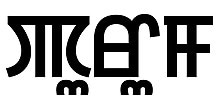
The Purums are an indigenous tribe of Manipur. They are (or were) notable because their marriage system is the subject of ongoing statistical and ethnographical analysis; Buchler states that “they are perhaps the most over-analyzed society in anthropology”. Purums marry only in selected sibs; the allowed sibs are fixed by traditional customs.
The Purums are divided into five sibs, namely, Marrim, Makan, Kheyang, Thao and Parpa. There is no indigenous centralized government.According to the 1931 Census of India, the Purums numbered 145 men and 158 women, all practising their ancestral tribal religion; in 1936 they numbered 303 individuals but in the 1951 census they numbered only 43 individuals.
Read More About Purum / Source
Ralte
The Ralte tribes were mostly found scattered in the northern part of today’s Aizawl, Kolasib and Serchhip Mamit, Lunglei District and all over Mizoram. Tahan (Myanmar) Bangladesh, Tripura, Assam and Manipur India . The total population of Ralte tribes is around 5,00,000+ Various town and villages in Mizoram and Myanmar and Ralte Pau (Ralte language ) is used by only around 2000-5000 people nowadays .
The Raltes mainly divided themselves into 4 clans namely – Kawlni, Siakeng, Khelte and Lelhchhun.
SIAKENG:- Engkai, Engkhung, Siakhang, Hilthang (Thangsiam, Damphut & Tukhum), Haizang (Chawnthang & Chawnchhin), Khumchiang (Chawngtual, Hmundin & Chhanzo), Hillu, Khelhau, Darkim, Manglut, Hnawtsut, Hnawtkhel, Khumtung, Lehvung, Thangbur, Tipawm/Kipawm, Hauhniang, Chhuanhu, Zongai, Ailet, Hualkhung, Zaucha (Sawithang, Hauthual, Luahphung, Thawmlo, Hualthang, Kulsep, Seldam, Kaihlek), etc.
KAWLNI.:- Kawlni, Rengsi, Rengngo, Renghang, Madama, Chalchung, Chalchiang, Bungsut, Chalbawk, Kawltung, Uikhawl, Chalsawp, Kawlvawm, Thangchhuan, Chaltum, Doubul, Hlamvel, Holat, Chuaungeng, Arte, Lawisut, Helhlah, Thasum, Saphaw, Khawnghawr, Bhal eng, Thangkawp.
LELHCHHUN.:- Chhunthang, Chhiarkim, Vawngsual, Tunglei, Leihang, Hangdem, Chuanglawk, Thangbung, Hauphut, Selpeng, Hratchhum, Chhunghleh, Haudim, etc.
KHELTE.:- Lutmang, Chhinghlu, Hmaimawk, Vangkeu, Vohang, Zaucha, Vohlu, Thatchhing, Chhiarchuang, Zahlei, Chiangkhai, Chiangthir, Lawnghau, Hauvawng.
Read More About Ralte / Source
Sümi Naga
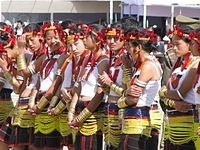
The Sümi Naga also known as Sema Naga are a major Naga ethnic group in the Indian state of Nagaland. The Sümis mainly inhabit Zünheboto District, parts of Niuland District and Kiphire District although many have spread and are now living in a few more districts within Nagaland.
Anthropological study of the Sümis is documented in the book The Sema Nagas by J. H. Hutton, who was a Professor of Social Anthropology in the University of Cambridge. The Sümi is one of the recognised scheduled tribes of India.
Read More About Sümi Naga / Source
Simte
The Simte are one of the tribe of the Kuki community in Northeast India. They are mainly concentrated in the southern parts of the state of Manipur. Most of the Simte are descendants of Ngaihte. Sim means South in their dialect. Simte people mainly settled in Thanlon Sub-Division, Lamka town in Churachandpur, Manipur, Motbung, Leimakhong and parts of Nagaland areas. A significant number also are settled in neighbouring areas of Mizoram and Assam. There are also Simte in Chin State in Myanmar.
Read More About Simte / Source
Sukte
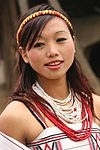
The Sukte are one of the clan of Zomi people in Manipur state in India, and a former subject of the Guite until before they claimed their independent chieftainship under the military cover of Pawihang in the mid 19th century CE. They were listed as Salhte in the 1947 Constitution where they are among the groups given Adivasi status. They are commonly referred to as the Zomi by others, but they use the name Sukte for themselves.
Only five people were counted in this ethnic group in the 1981 census. However the leader of the youth group for the Zomi claims there are 3,500 Sukte currently. The Sukte are agriculturalists, growing primarily maize and rice. They are mainly Christian in religion.
Read More About Sukte / Source
Tangkhul
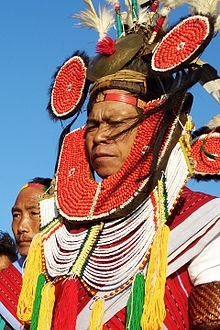
The Tangkhuls are a major Naga ethnic group living in the Indo–Burma border area, occupying the Ukhrul district and Kamjong district in Manipur, India and the Somra tract hills, Layshi township, Homalin township and Tamu Township in Burma. Despite this international border, many Tangkhul have continued to regard themselves as “one nation”.
Read More About Tangkhul / Source
Thadou
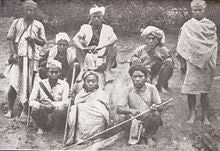
Thadou people are an indigenous ethnic group of Chin-Kuki inhabiting North-east India. Thadou is a dialect of the Tibeto-Burman family. They are the second largest in terms of population in Manipur, next to Meetei according to Manipur census 2011. Thadou population have been reported only in India, some small population have settled in Nagaland, Assam, Tripura, Meghalaya, Mizoram and Delhi. Thadous share a common culture with all the Chin-Kuki-Mizo community.
Read More About Thadou / Source
Vaiphei
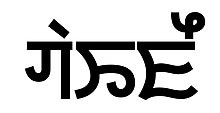
The Vaiphei people is an ethnic group who live in North-East Indian state of Manipur and its neighbouring country of Myanmar (Burma). Lt. Colonel J. Shakespeare (1887–1905), the first superintendent of the then Lushai Hills, referred to them as one of the Kuki clans of Manipur and recognized as part of the Chin-Kuki-Mizo tribe by the state government of Manipur. The group is originally from the Siyin valley located in the northern part of Chin State. The group speak the Vaiphei language.Each clan has a chief called ‘Upa’. The Vaiphei people follows primogeniture system where the eldest son inherits his father’s property. Considered to be the first among the Chin-Kuki-Mizo groups to settle in Manipur and hence were included under the “Old Kuki” group based on arrival and settlement in the present borders of Manipur.
Read More About Vaiphei / Source
Zou
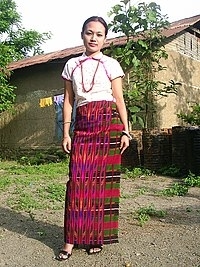
The Zou people (Burmese: ဇိုလူမျိုး; also spelled Yo or Yaw or Jo or Jou ) are an indigenous community living along the frontier of India and Burma, they are a sub-group of the Zo people (Mizo-Kuki-Chin). In India, they live with and are similar in language and habits to the Paite and the Simte peoples. In Burma, the Zou are counted among the Chin people.They are a hill people , “Zou” may plainly means “Hills” denoting the Zous are “people of the hills” or “of the hills”, and “Zou” has also a different meaning in Zou language that is “complete” or another word for it is “finish”. But, the Zou people believed that they incepted the name ‘Zou’ from their forefather ‘Zou’ or ‘Zo’, believed to be the progenitor of the broad Chin-Kuki-Mizo people. The Zous can be found in different parts of India and also of the world.
In India, the Zou are officially recognized as one of the thirty-three indigenous peoples within the state of Manipur, and are one of the Scheduled tribes. According to the 2001 Census, the Zou/Jou population in Manipur is around 20,000, less than 3% of the population. The community is concentrated in Churachandpur and Chandel districts of Manipur in North-East India.
Pnar
The Pnar, also known as Jaiñtia, are a sub-tribal group of the Khasi people in Meghalaya, India. The Pnar people are matrilineal. They speak the Pnar Language, which belongs to the Austro-Asiatic language family and is very similar to the Khasi language. The Pnar people are natives of West Jaintia Hills and East Jaintia Hills District of Meghalaya, India. They call themselves as “Ki Khun Hynñiew Trep” (Children of 7-hut). Their main festivals are Behdeinkhlam, Chad Sukra, Chad Pastieh and Laho Dance.
Koch
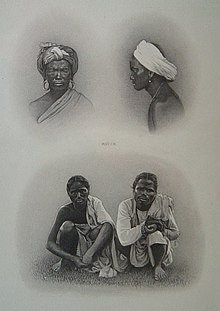
The Koch are a small trans-border ethnic group of Assam and Meghalaya in India and northern Bangladesh. The group consists of nine matrilineal and strictly exogamous clans, with some of them preserving a hitherto sparsely documented Boro-Garo language called Koch, whereas others have switched to local varieties of Indo-Aryan languages. It is a Scheduled Tribe in Meghalaya, India. Koches want to preserve language and culture and heritage.The Koch people in this group are those who have preserved their languages, their animistic religions and follow non-Hindu customs and traditions. They are related but distinguished from the empire building Koch (the Rajbongshi people) and the Hindu caste called Koch in Upper Assam which receives converts from different tribes.
Kuki
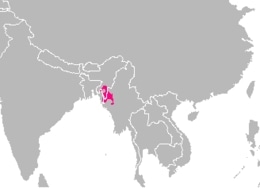
The Kuki people are an ethnic group native to the Mizo Hills (formerly Lushai), a mountainous region in the southeastern part of Mizoram and Manipur in India. The Kuki constitute one of several hill tribes within India, Bangladesh, and Myanmar. In Northeast India, they are present in all states except Arunachal Pradesh.Some fifty tribes of Kuki peoples in India are recognised as scheduled tribes, based on the dialect spoken by that particular Kuki community as well as their region of origin.
The Chin people of Myanmar and the Mizo people of Mizoram are kindred tribes of the Kukis. Collectively, they are termed the Zo people.
Mara
The Mara are the native inhabitants of Mizoram in India, native to northeastern India, primarily in the Mara Autonomous District Council of the state of Mizoram, where they form the majority of the population. The Maras are related to Kuki and Mizos in India and Kachin, Karen, Shan and Chins in Myanmar. Significant numbers of Maras also live in the southwestern and south-central parts of Chin State (Burma) in Myanmar – the contiguous area of Mara area in India mostly separated by Kolodyne / Chhimtuipui / Beino river, which forms an international boundary.
They have gone by a number of tribal names to the outside world. The Mara were earlier known as Magha, Miram, Baungshel, Maring, Zyu or Zao/Zho, Khuangsai. Additionally they were known as Lakher by the Tlaikao/Lushai, Miram by the Lai, and Shendu by the Khumi, Dai, Shô, Matu, and Rakhaing people. The new name Mara was added to the List of Scheduled Tribes in Mizoram state in 1978, replacing the old name. They constitute a distinct tribal group in the Siaha / Saiha district of Mizoram, while also occupying the northern part of Paletwa township and Matupi township, western and southern part of Thlantlang township, and the southern part of Hakha township. They refer to themselves as “Maras”.
Naga
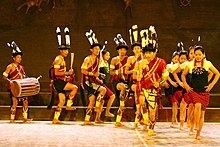
Nagas are various ethnic groups native to northeastern India and northwestern Myanmar. The groups have similar cultures and traditions, and form the majority of population in the Indian states of Nagaland and Manipur and Naga Self-Administered Zone of Myanmar; with significant populations in Arunachal Pradesh and Assam in India; Sagaing Region and Kachin State in Myanmar (Burma).
The Nagas are divided into various Naga ethnic groups whose numbers and population are unclear. They each speak distinct Naga languages often unintelligible to the others, but all are loosely connected to each other.
Tripuri
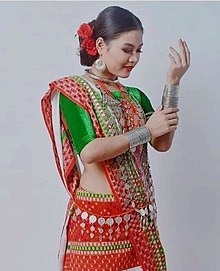
The Tripuri (also known as Tripura, Tipra, Tiprasa, Twipra) are an ethnic group originating in the Indian state of Tripura. They are the inhabitants of the Twipra/Tripura Kingdom in North-East India and Bangladesh. The Tripuri people through the Manikya dynasty ruled the Kingdom of Tripura for many years until the kingdom joined the Indian Union on 15 October 1949.
Read More About Tripuri / Source
Reang
Reang is a Tripuri clan of the Indian state of Mizoram and Tripura. The Reangs can be found all over the Tripura state in India. However, they may also be found in Assam and Mizoram. They speak the Kaubru language which is similar with Kokborok Language which is of Tibeto-Burman origin.
In 2018, following the Union Home Ministry’s decision to give voting rights to around 30,000 people who had fled from Mizoram to Tripura in 1997 in the wake of inter-community violence, The Election Commission asked the State of Mizoram to revise its rolls for the 2018 polls and include the members of the internally-displaced community. As many as 32,876 people of the Bru tribe were set to be repatriated to Mizoram after a tripartite agreement was signed between the Centre, Tripura and Mizoram government. On 16 January 2020, a quadripartite agreement was signed among the Centre, state governments of Tripura and Mizoram and Bru representatives to facilitate permanent settlement of Bru IDPs( Internally displaced people’s) from Mizoram in Tripura, benefitting around 34,000 IDPs.
Read More About Reang / Source
Bhottada
The Bhottada (also known as Dhotada, Bhotra, Bhatra, Bhattara, Bhotora, Bhatara) is an ethnic group found mainly in many districts of Odisha and Chhattisgarh. The 2011 census showed their population to be around 450,771. They are classified as a Scheduled Tribe by the Indian government.
Read More About Bhottada / Source
Bhuiya
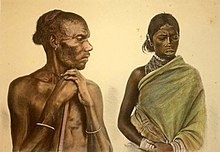
The Bhuiyan or Bhuiya are an indigenous community found in the Indian states of Bihar, Jharkhand, Madhya Pradesh, Odisha, Uttar Pradesh and West Bengal. They are not only geographically disparate but also have many cultural variations and subgroups.
Read More About Bhuiya / Source
Binjhal
The Binjhal (also known as Binjhwar) is an ethnic group and an offshoot of the Austroasiatic Baiga tribe, are found mainly in many districts of Odisha, Chhatishgarh, Madhya Pradesh and Maharashtra. The 2011 census showed their population to be around 137,040. They are classified as a Scheduled Tribe by the Indian government.
Read More About Binjhal / Source
Juang
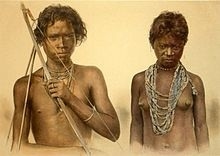
The Juang are an Austroasiatic ethnic group found only in the Gonsaika hills of Keonjhar district of Odisha. Some Juangs, however migrated to neighbouring plains of Dhenkanal district of Odisha during the Bhuiyan revolt in the late 19th century. The 2011 census showed their population to be around 50,000. The Juang language belongs to the Munda family of the Austroasiatic languages. They are classified as a Scheduled Tribe by the Indian government.
Read More About Juang / Source
Kora
The Kora (also known as Kuda, Kura, Kaora, Dhangar and Dhanger) are an ethnic group found in the Indian states of West Bengal, Odisha and Jharkhand and the Bangladeshi division of Rajshahi. The 2011 census showed their population to be around 260,000. They are classified as a Scheduled Tribe by the Indian government.
Lodha
Lodha may refer to Hindu or Jain surname, caste, tribe or community which have different origin and class.
Disambiguation: Lodhia, a Kshatriya (Chandravanshi) surname used by people in India.
Lodha people, are a tribal/Adivasi people living primarily in the Indian states of Rajasthan, West Bengal and Odisha.
Lodhi, agriculturalist caste primarily found in Uttar Pradesh and Madhya Pradesh, categorised as Other Backward Class and are Rajputs, preferably known as “Lodhi-Rajput”,
Oswal, also known as Oswal Lodha, belongs to Jain religion.
Read More About Lodha / Source
Mahli
The Mahli are a community in the Indian states of Jharkhand, Odisha and West Bengal. Basketry was main occupation of mahlis. Mahli speak Sadri, Mundari and Santali as their mother tongue rather than Mahli. May be Mahli is a threatened language. Also use Bengali, Hindi and Odia. They are included in list of Scheduled Tribe.
Read More About Mahli / Source
Mankidi
The Mankidia (also known as Mankadia, Mankidi, Mankirdia) are a nomadic ethnic group of India that live in Odisha. Mankidias mostly live in the Mayurbhanj, Sambalpur, Kalahandi and Sundergarh districts. According to the 2011 census, the population of Mankidia was 2,222. They are classified as a Scheduled Tribe by the Indian government.
Read More About Mankidi / Source
Mirdha
Mirdha (kapu)
The Mirdha (Kapu) people are an Indian Others backward classes (OBC) group that live mostly in the state of Tamilnadu , Andra Pradesh , karnatak, Odisha, Rajasthan. The 1981 census recorded a population of 28,177, mainly spread over the districts of Sambalpur, Bolangir and Kalahandi. They are considered to be the other backward classes offshoots of several other backward classes groups.
Read More About Mirdha / Source
Rajuar
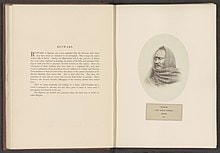
Rajuar (also spelt as Rajuala, Rajuad) is a shifting cultivation community. The people of this community mainly live in Bihar, Jharkhand, Madhya Pradesh, Odisha and West Bengal. The community living in Odisha is considered a Scheduled Tribe while the people living in other states are considered as OBC.
Read More About Rajuar / Source
Shabar
The Sabar people (also Shabar and Saora) are one of the Adivasi of Munda ethnic group tribe who live mainly in Odisha and West Bengal. During the colonial period, they were classed as one of the ‘criminal tribes’ under Criminal Tribes Act 1871, and suffer from social stigma and ostracism in modern times.Also known as Saora, the Sabar tribe finds mention in the Hindu epic Mahabharata, while in some parts of East Singhbhum district mainly in Musabani, they are known as in Kariya. Noted writer and activist Mahasweta Devi is known for working with these forest tribals.This reclusive tribe is found primarily in Odisha and in Midnapore District of West Bengal.
The traditionally forest-dwelling tribe lack experience in agriculture, and rely on the forests for their livelihood. In recent years, with the spread of the Naxalite rebellion in the area, the police often restrict their access to the forest. In 2004, five persons in the Sabar village of Amlasole, in Midnapore district, died after several months of starvation,
leading to a national media furore. Subsequently, Durbar Mahila Samanway Committee (DMSC) started a school in the area, funded partially by sex workers from Kolkata.In June 2008, the Sabar suffered severe flooding in many of their West Bengal villages, and then received large amounts of aid from Catholic missionaries.
Hundreds of Sabars migrated to present-day Bangladesh during the colonial period to work as tea garden labourers. Today, there are around 2000 of them residing the northeastern district of Moulvibazar, in areas such as Nandarani, Harinchhara and Rajghat.
Read More About Shabar / Source
Sounti
The Sounti (also spelled as Saunti) are an Indo-Aryan ethnic group found mainly in the districts of Kendujhar and Mayurbhanj, Odisha . The 2011 census showed their population to be around 112,803. They are classified as a Scheduled Tribe by the Indian government.
Read More About Sounti / Source
थारू
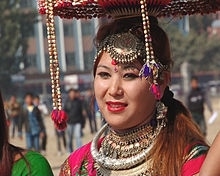
The Tharu people are an ethnic group indigenous to the Terai in southern Nepal and northern India. They speak Tharu languages. They are recognized as an official nationality by the Government of Nepal. In the Indian Terai, they live foremost in Uttarakhand, Uttar Pradesh and Bihar. The Government of India recognizes the Tharu people as a scheduled tribe.
Garasia
Garasia, alternatively spelled Girasia, Girasiya or Garasiya, is a title used by the Koli chieftains of petty states or Jagirdars in India who held the villages as Giras granted by rulers. Many of the Chunvalia Kolis held the title of Girasia and they worshipped the Hindu goddess Shakti.
The Koli Garasiya were tributary to the ruler of state who gave the Giras.
Read More About Garasia / Source
Mina
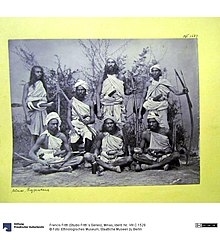
Meena (pronounced [miːɳa]) is a sub-group of Bhils. They speak Meena language. They started adopting the Brahmin worship system. Its name is also transliterated as Meenanda or Mina. Historians claim that they belong to the Matsya tribe. They got the status of Scheduled Tribe by the Government of India in 1954.The Zamindar Meena, Chowkidar Meena, Gurjar Meena, Padiyar Meena, Bhil Meena, Rawat Meena, Takur Meena and Rajput Meena are a subgroup of Meenas.
Bhutia
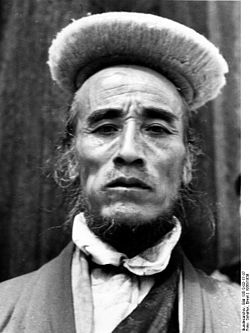
Bhotiya or Bhot (Nepali: भोटिया, Bhotiyā) are groups of ethno-linguistically related Tibetan people living in the Transhimalayan region that divides India from Tibet. The word Bhotiya comes from the classical Tibetan name for Tibet, བོད, bod. The Bhotiya speak numerous languages including Ladakhi. The Indian recognition of such language is Bhoti / Bhotia having Tibetan scripts and it lies in the Parliament of India to become one of the official languages through Eighth Schedule of the Indian Constitution.
Read More About Bhutia / Source
Lepcha
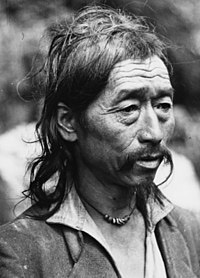
The Lepcha (; also called Rongkup (Lepcha: ᰕᰫ་ᰊᰪᰰ་ᰆᰧᰶ ᰛᰩᰵ་ᰀᰪᰱ ᰛᰪᰮ་ᰀᰪᰱ, Mútuncí Róngkup Rumkup, “beloved children of the Róng and of God”) and Rongpa (Sikkimese: རོང་པ་)) are among the indigenous peoples of the Indian state of Sikkim and Nepal, and number around 80,000. Many Lepcha are also found in western and southwestern Bhutan, Tibet, Darjeeling, the Province No. 1 of eastern Nepal, and in the hills of West Bengal. The Lepcha people are composed of four main distinct communities: the Renjóngmú of Sikkim; the Dámsángmú of Kalimpong, Kurseong, and Mirik; the ʔilámmú of Ilam District, Nepal; and the Promú of Samtse and Chukha in southwestern Bhutan.
Read More About Lepcha / Source
Kadar

The Kadar are a tribal community in India, a designated Scheduled Tribe in the states of Tamil Nadu, Karnataka, and Kerala. They are an aboriginal tribe whose traditional way of life has been based on hunting and gathering.The People of Paraiyar Community claims that Kadar is part of Paraiyar who lives and take care of forest and forest lives.
Read More About Kadar / Source
Koraga
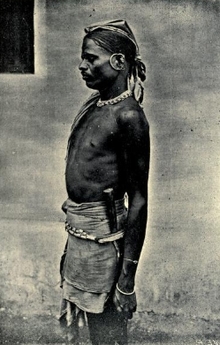
The Koraga are a tribal community found mainly in the Dakshina Kannada, Udupi districts of Karnataka and the Kasaragod district of Kerala, south India. These areas in Karnataka, are altogether often referred to as Tulunaad, which roughly corresponds to the boundaries of the erstwhile South Canara district. They are also found in small numbers in adjoining districts of Uttara Kannada, Shimoga and Kodagu. The Koraga are classified by the Government of India as a Scheduled Tribe.The Koraga, who numbered 16,071 according to the 2001 census of India, have their own language, classified as an independent Dravidian language, which is strongly influenced by Tulu, Kannada, Malayalam, languages commonly found in their area.
Read More About Koraga / Source
Kota
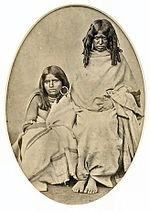
Kotas, also Kothar or Kov by self-designation, are an ethnic group who are indigenous to the Nilgiris mountain range in Tamil Nadu, India. They are one of the many tribal people indigenous to the region. (Others are the Todas, Irulas and Kurumbas). Todas and Kotas have been subject to intense anthropological, linguistic and genetic analysis since the early 19th century. Study of Todas and Kotas has also been influential in the development of the field of anthropology. Numerically Kotas have always been a small group not exceeding 1,500 individuals spread over seven villages for the last 160 years. They have maintained a lifestyle as a jack of all trades such as potters, agriculturalist, leather workers, carpenters, and black smiths and as musicians for other groups. Since the British colonial period they have availed themselves of educational facilities and have improved their socio-economic status and no longer depend on the traditional services provided to make a living. Some anthropologists have considered them to be a specialized caste as opposed to a tribe or an ethnic group.
Kotas have their own unique language that belongs to the Dravidian language family but diverged from South Dravidian sub family at some time in BCE. Their language was studied in detail by Murray Barnson Emeneau, a pioneer in the field of Dravidian linguistics. Their social institutions were distinct from mainstream Indian cultural norms and had some similarities to Todas and other tribal people in neighbouring Kerala and the prominent Nair caste. It was informed by a fraternal polygyny where possible. Kota religion was unlike Hinduism and believed in non-anthropomorphic male deities and a female deity. Since the 1940s, many mainstream Hindu deities also have been adopted into the Kota pantheon and temples of Tamil style have been built to accommodate their worship. They’ve had specialized groups of priests to propitiate their deities on behalf of the group.
Kurumba

Kurumba (Tribe) (Tamil: Kurumban,Kurumbar)
(Hindi: Gadariya,Pal)(Malayalam: Kuruman)(Kannada: Kuruba, Kurubaru)(Telugu: Kuruma)(English:Kurumbas, Kurumans, Kurumbars, Kurumans, Kurubas, Kurubarus), a fierce race is the most important of all those tribes, owing to the influential part they have played in the History of India. They were representatives of ancient Kurumba or Pallavas who were once so powerful throughout Southern India. Kurumba sovereignty was affected by the Chola King Adondai about 7th or 8th century AD and they were scattered far and wide.
Kurumba are shepherds and weavers of coarse woolen blankets.
Kurumba are a designated Scheduled Tribe in the Indian states of Karnataka, Kerala and Tamil Nadu. The Kurumbar are one of the earliest known inhabitants of the Western Ghats, who are engaged in the collection and gathering of forest produce, mainly wild honey and wax. The members of this community are short, have dark skin, and have protruding foreheads.Kurumbar believe in Hinduism. The main deity of the tribe is Lord Shiva under the name of Bhairava. They also worship animals, birds, trees, rock hillocks, and snakes, along with the other Hindu deities.
There are several divisions of Kurumba: Jenu, Betta and Alu. Each of these divisions speaks their own Dravidian language. Jenu Kurubas are primarily found in the northern part of the Nilgiris, in the Mysuru district of Karnataka.
Kurumbar are one of the six ancient tribal groups in Tamil Nadu. According to the Madras Census Report of 1891, the Pallavas were Kurumbas. They live very much in tune with Nature. Hunting and collecting forest produce are the two main means of living for the Kurumbar tribe. However, the restrictions to protect native forest and wildlife have forced them to find work outside the forests.
Read More About Kurumba / Source
Maha Malasar
Mala Malasar is an unclassified Southern Dravidian language spoken by a Scheduled tribe of India. It is close to Irula.
Read More About Maha Malasar / Source
Malayarayan
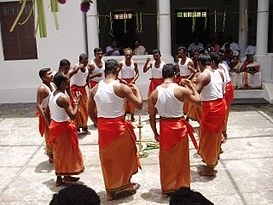
Mala Arayan (alternatively Malaiyarayan, the word Malai Arayan means ‘Monarch of the Hills’) is a member of a tribal community in parts of Kottayam, Idukki and Pattanamtitta districts of Kerala state, southern India. They are listed (Central List No – 20) as part of Scheduled Tribes by the Government of India. Among the Scheduled Tribes, Malai Arayans out class all the other tribes in socio-economical and educational aspects. When an evaluation in the educational and employment prospect is taken, it will be found that almost all the Government Servants and other employees are coming from this faction of Scheduled Tribes.
Majority of the Population follows Hindu religion.Some of the Malai Arayans turned their religious belief from their centuries-old “Mala Daivangal” (renegades and traditional Hindus following the hereditary regulations and customs are included in this group) to Christianity, especially to Church of South India. Malai Arayans are opened to exploitation of their illiteracy and cultural uniqueness for centuries.Traditionally Malaarayans, have good moral values. Malaarayans usually practice agriculture, but most of them lost their farm land due to exploitation.
Read More About Malayarayan / Source
Malapandaram
Malapandaram (Hill Pandaram) is a Dravidian language of Kerala and Tamil Nadu that is closely related to Malayalam.
Read More About Malapandaram / Source
Malavedan
Malavedan (Malai Vedan) is a Dravidian language of Kerala and Tamil Nadu that is closely related to Malayalam. Malavedan speakers are one of the tribal groups in Kerala. Many of them live in the Ernakulam, Kollam, Kottayam, Idukki, Pathanamthitta, and Thiruvananthapuram districts.
Read More About Malavedan / Source
Malasar
Malasar (Tamil : மலைசர்) are a designated Scheduled Tribe in the Indian states of Kerala and Tamil Nadu. The Malasar are one of the earliest known inhabitants of the Western Ghats, in Anaimalai Hills. Malasar is an unclassified Southern Dravidian language spoken by a Scheduled tribe of India.
Read More About Malasar / Source
Malayali
The Malayali is a tribal group found in the Eastern Ghats of northern Tamil Nadu. The name derives from malai-alam meaning “hill-place,” denoting an inhabitant of the hills. They are the largest Scheduled Tribe in Tamil Nadu, with a population of around 358,000. They are divided in to three groups: the Periya Malayalis (“big” Malayalis) who live in the Shevaroys, the Nadu Malayalis (“middle” Malayalis) from the Pachaimalais, and the Chinna Malayalis (“small” Malayalis) from the Kollaimalais.
Edgar Thurston believed they were once Tamils from the plains who moved up into the hills and developed their own culture.Each group of Malayalis have their own tales about their origins. According to their traditions, the three groups were descendants of three brothers from Kanchipuram who settled at each of the three hill ranges. One story is this: A long time ago the Vedars (hunting community) of Kagundi, having been refused marriage with Vellalar girls, kidnapped them. To recover them, seven Vellalar men set out with dogs, telling their wives that if their dogs returned alone, they should assume they had perished. At the Palar river, the men were able to cross but the dogs returned home. After the men successfully rescued the girls, they returned home to find themselves presumed dead and their wives now considered widows. Therefore they married Vedar women and moved into the hills.The Malayalis are mainly hill farmers, who cultivate thinai and samai (types of millet). Each village is headed by a headman, who has an extra share of goods from the festivals. Under the headman was the kangani, who did duties for the headman and received some grain in return. They have a system of stratification. The Gounder is the headman of the village and has the highest status. The moopan is an intermediary between the Gounder and the kudippadai, the common people. These divisions are only present in social and religious rites.The Malayalis have several types of marriage: arranged marriage (known as sellakalyanam), marriage by elopement (less common) are some. During the nitchayadhartham, the engagement, a group of 10 men, including the groom’s father (if alive) goes to the bride’s house. The group must wear dhotis and thalaipagai (a turban) such that no hair on the head is seen. Although its original reasoning is unknown, some believe it wards off evil omens. The party is given mats to sit on, and are served water by the girl in order to observe her bearing and manners. If they need more time to observe, they ask for more water. They are then invited to stay for dinner: if the match is not OK, the invitation is decline, but if the match is approved, the invitation is accepted. To fix the bride price, or parisam in Tamill, the bride and groom’s party meet on an auspicious day, without bad omens being present, and are offered milk (or starch water). Then follows a symbolic conversation about the quality of the milk, which ends with the groom proposing the bride price. This is then negotiated again twice, which is the final bride price. The bridegroom’s family is obligated to give the largest parisam they can afford. The day of the marriage is fixed at the same time.They worship Siva and Vishnu, but mainly worship village goddesses also found in the lowlands such as Mariamman and Draupadiamman. They commonly took oaths holding camphor in front of the god and then extinguish it, symbolizing their desire for the deity to “snuff out” their life if they have told a lie.
Read More About Malayali / Source
Mannan
The Mannan people are a scheduled tribe (ST) of Kerala, India. They are one of the Adivasi
who live in Idukki District. The Mannan follow a matrilineal system of descent, and their ruler, the Raja Mannan, is elected by community headmen from among those eligible by heredity. They are traditional forest-dwellers, gaining their livelihood by collecting and utilising resources of the dense forest, and supplementing these with shifting agriculture. They are believed to be descendants of a Pandyan King and their mother tongue is Tamil. Changes since the mid-20th century, including an influx of settlers from the plains of Kerala, degradation of the forest environment, and exposure to modern economic and cultural systems have all posed challenges to their survival as a people continuing their customary way of life.
Read More About Mannan / Source
Mudugar
Mudugar indigenous people live mainly in the Attappadi valley in Palakkad district of Kerala, South India.It was also reported that Some Mudugar also live in Cuddalore district, Nilgiri District and Dharmapuri District of Tamil Nadu.
Read More About Mudugar / Source
Muthuvan
The ‘Muthuvans’ or ‘Mudugars’ are tribe of cultivators in hills of Coimbatore and Madurai. They are also found in Adimali and Devikulam forest regions of Idukki district, Kerala. The ‘Muthuvan’ people were loyal subjects of the dynasty of Madurai, according to tribal legend. When the dynasty was deposed, the surviving royal members migrated to Travancore, central Kerala. On their way to Kerala, the Muthuvas carried the idols of Madurai Meenakshi, the deity of the royal family, on their backs. The word Muthuvar in Tamil is used to denote the same community in Tamil Nadu. The word “Muthu” means elder and literal meaning of “Muthuvar” is elders. Muthuvan are the ancient tribes of this land.The Muthuvans are very independent and reluctant to interact with the outside world. The Muthuva tribe grows ragi, cardamom and lemon grass. Now they are also cultivating banana and tapioca for their daily usage. Most of their women are illiterate and strongly bonded with their customs.
Read More About Muthuvan / Source
Paliyan
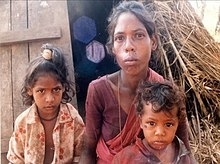
The Paliyan, or Palaiyar or Pazhaiyarare are a group of around 9,500 formerly nomadic Dravidian tribals living in the South Western Ghats montane rain forests in South India, especially in Tamil Nadu and Kerala. They are traditional nomadic hunter-gatherers, honey hunters and foragers. Yams are their major food source. In the early part of the 20th century the Paliyans dressed scantily and lived in rock crevices and caves. Most have now transformed to traders of forest products, food cultivators and beekeepers. Some work intermittently as wage laborers, mostly on plantations. They are a Scheduled Tribe. They speak a Dravidian language, Paliyan, closely related to Malayalam.
Read More About Paliyan / Source
Toda
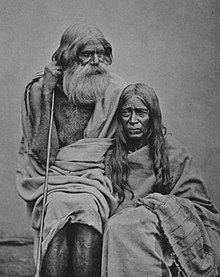
Toda people are a Dravidian ethnic group who live in the Indian states of Tamil Nadu. Before the 18th century and British colonisation, the Toda coexisted locally with other ethnic communities, including the Kota, Badaga and Kurumba, in a loose caste-like society, in which the Toda were the top ranking. During the 20th century, the Toda population has hovered in the range 700 to 900. Although an insignificant fraction of the large population of India, since the early 19th century the Toda have attracted “a most disproportionate amount of attention because of their ethnological aberrancy” and “their unlikeness to their neighbours in appearance, manners, and customs”. The study of their culture by anthropologists and linguists proved significant in developing the fields of social anthropology and ethnomusicology.
The Toda traditionally live in settlements called mund, consisting of three to seven small thatched houses, constructed in the shape of half-barrels and located across the slopes of the pasture, on which they keep domestic buffalo. Their economy was pastoral, based on the buffalo, whose dairy products they traded with neighbouring peoples of the Nilgiri Hills. Toda religion features the sacred buffalo; consequently, rituals are performed for all dairy activities as well as for the ordination of dairymen-priests. The religious and funerary rites provide the social context in which complex poetic songs about the cult of the buffalo are composed and chanted.Fraternal polyandry in traditional Toda society was fairly common; however, this practice has now been totally abandoned, as has female infanticide. During the last quarter of the 20th century, some Toda pasture land was lost due to outsiders using it for agriculture or afforestation by the State Government of Tamil Nadu. This has threatened to undermine Toda culture by greatly diminishing the buffalo herds. Since the early 21st century, Toda society and culture have been the focus of an international effort at culturally sensitive environmental restoration. The Toda lands are now a part of The Nilgiri Biosphere Reserve, a UNESCO-designated International Biosphere Reserve; their territory is declared UNESCO World Heritage Site.
Halam
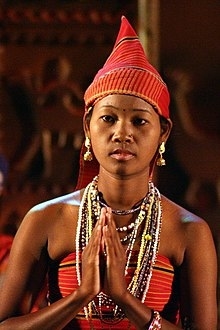
The Halam community are various tribes native to the state of Tripura in India. The name Halam was coined by the Tipra Maharaja. As per their oral tradition they called themselves “Riam”, which literally means “Human being”. And lyrically they also call themselves “Riamrai, Raivon, Longvon, Chepvon etc.”. The Halam are further divided into 12 sub-tribes, namely Chorai, Molsom, Hrangkhol, Kaipeng, Kalai, Ranglong, Sakachep, Thangachep, Bongcher, Korbwng, Dab and Rupini.
Read More About Halam / Source
Jamatia
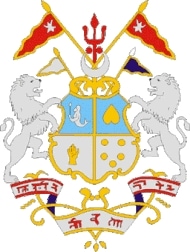
The ‘Jamatias’ are the one of the main Tripuri clans of Tripura and the only such clan with its own Customary law in practice, which is called Jamatia Raida.
Read More About Jamatia / Source
Magh
The Magh ( Mog ) is the term used in history of Bengali and others people of South Asia for the Marma and Arakanese/Rakhine of Arakan. During the 16th and 17th centuries, the meaning of Magh represent the people belongs to magadha (bihar) part of the indian state of Bihar. During the rise of Shunga dynasty & the fall of buddhism in the country of Moghs/Maghs or Magadha many of Local Buddhist people migrated towards east of Bengal, they established a Kingdom between chittagong & Arakan Yoma Mountain in Burma.
the Mrauk U Kingdom of Arakan expanded its territories to the Chittagong area of Bengal. The navy of the kingdom of Arakan or rather Magh sailors along with the Portuguese had plundered along the coast of Chittagong; as well as in the rivers of Bengal; and captured many Bengalis and sold them in the slave markets that were run by the Dutch East India Company, VOC in Batavia. For those notorious activities in the past, the Arakanese were called Magh pirates by the people of Bengal. Another alternative suggestion for the term Mog suggests that the word is derived from Mongol. That country is mentioned in the Arakanese Chronicles as the original residing place of the ancestors of the Arakanese kings who were the relatives of the Buddha.
In his memorise, the Mughal emperor Jahangir described a group of Maghs who visited him, accompanying Hushang, son of Islam Khan. He gives the date of the visit as 1 April 1613 (14th of Farvardin on the Iranian calendar, 1022). He describes the group as hailing from a Magh controlled territory near Pegu (capital of the Mon kingdom) and Arakan. Jahangir considered the Maghs unrestrained in their diet (“They eat everything there is either on land or in the sea, and nothing is forbidden by their religion”) and their marital habits (“They marry their sisters by another mother”). He described their language as “that of Tibet,” and their religion as neither Muslim nor Hindu.During the hey days of the Arakanese kingdom, many Arakanese people who were called as Mogs lived in Chittagong region of Bengal. As Chittagong, what is now in Bangladesh, was part of Arakan in the past, the Arakanese Magh governors ruled part of Bengal by residing in that city as the capital of the colonial region of Arakan. The Arakanese king also appointed Bohmong Chiefs to rule in the Chittagong Hill Tracts (CHT) in Bohmong Htaung. The Chakma (Thaik people) region of CHT and the kingdom of Tripura were also part of Arakan at that time. Those people living in CHT, especially in Bandarban were still ruled by Bohmong Chief until now since Arakan’s rule of Bengal. The Arakanese who have been living in CHT, Bengal, since the ascent of Arakanese kingdom in the 16th century were also known as the Marma people. Those Marmas are known as Mog to the people of Bengal as they are the Arakanese descendants. Arakanese people living in Hill Tripura state of India since that ancient time, are also called as Mog or Magh by the local people of Tripura State.
Noatia
Noatia are one of the Tripuri clan of Tripura state of India. The clan mainly lives in the North Tripura districts of the Tripura state of India. They speak the Noatia dialect of Kokborok which is of Tibeto-Burmese origin.
The Noatia are one of the important Tripuri clan in Tripura. In fact, Noatias have resided in the Arakan Hill Tracts for a long time before. It is said that Noatia is not their actual clan name, and are actually Tripuris. Legend says that once a furious war took place between the then Tripura king and Arakan king. In that battle, Arakan king took lead and captured hundreds of Tripuri soldiers. These Tripuri soldiers had to stay at Arakan. During their stay at Arakan, they had contact and interaction with the local tribals and as a result their language and culture developed changes to some extent. Even today in the life and culture of Noatias influence of their old culture are still found in the form of their physical structure, skin colour, food habit, language, rites and rituals. As per 2011 Census, their population is 14,298.
Noatia have 16(Sixteen) major sub-clans. These sub-clans are Landa, Ramsaa, Debbarman, Lagung, Murasing, Noatia, Tripuri. Noatias are Hindus and observe all pujas and festivals as per their tradition and customs. Vaishnavism has great influence over the Noatias. They also observe Garia and Baisu festivals like other Tripuri clans.
Noatia also reside throughout Tripura such as in South Tripura, Sepahijala Tripura, Nort Tripura, Gomati Tripura and West Tripura district. At Garjee, Takma Chara, Kalaban & Rothaicherra under Udaipur sub-division of South Tripura there are many Noatia families, as well as in Sepahijala district at like Chandul, Twiwandal, Khamarbari and Twisa Khandal, Noabari and even at Urmai Kalakhet and also many Noatian families in sonamura subdivision like Manai pathar, Nidaya, Jamtali (Kalikhala), Jagatrampur, and also many other parts of tripura where Noatia culture exists which are yet to be known.
Read More About Noatia / Source
Buksa
Buksa, also known as Buksari and Bhoksa, is an Indo-Aryan language spoken by the Buksa people in parts of Uttarakhand and Uttar Pradesh, India.
Within Uttarakhand, most speakers of Buksa are found in several dozen villages in Udham Singh Nagar district in the south-east of state, mainly in the development blocks of Bajpur and Gadarpur. There are also speakers in a number of villages in the Ramnagar area of Nainital district, as well as in the urban centres of Dehradun, Haridwar and Pauri.Buksa has no written literature, but there is an oral tradition of folktales and folk songs.
Read More About Buksa / Source
Jaunsari
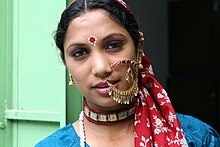
The Jaunsari are a small community found in Uttarakhand, northern India, more specifically in the Jaunsar-Bawar region of the western portion of the state in Garhwal Division. They speak the Jaunsari language which is an Indo-Aryan language.Jaunsari is a generic term for many communities.
Read More About Jaunsari / Source
Raji
The Raji people are a community found in Uttarakhand, India. As of 2001, the Raji people are classified as a Scheduled Tribe under the Indian government’s reservation program of positive discrimination.They call themselves Khasa and Bot Tho. Others also call them Forest Raji (Ban Raji) and Forest Rawat (Ban Rawat). They traditionally hunt for a living, especially porcupine and bats, and dig wild yams (Dioscorea spp.) and other forest foods. Some families have a trade agreement with local traders (Bhotiya) to sell their handmade wooden bowls while others have branched out into carpentry, selling other woodenwares such as plowshares and house building planks. Raji women have also been employed as rock crushers for construction projects. Households who were forcibly settled by the Government of India in the last generation mostly have subsistence-size garden plots and a few cattle as well.
Pankho
The Pankhos (Bengali: পাংখো), are a community inhabiting the Chittagong Hill Tracts of Bangladesh and also in India with a population of only 3,227 in Bangladesh according to the 1991 census. In the 1981 census they were 2440 in number. In Bangladesh, the Pankhos live in Barkal in Rangamati Hill District close to Mizoram.
The Luseis and Pankhos belong to the Kuki-chin-mizo group of people. The Lushai Hills, which is now part of Mizoram, is their original homeland. Though the Luseis and Pankhos are identified as separate tribes, they are culturally very close to each other. Though the Luseis do not understand Pankho language, the latter understand the Lusei language. Both the tribes are known for their bravery, honesty and truthfulness.
Read More About Pankho / Source
Parahiya
The Parahiya are a Hindu caste found in the state of Uttar Pradesh in North India.
Read More About Parahiya / Source
Patari
The Patari are a community found mainly in the Sonbhadra district of Uttar Pradesh, India.
Read More About Patari / Source
Bedia
The Bedia are a community in India. They believe that they originally lived on Mohdipahar of Hazaribagh district and have descended from the union of Vedbansi prince with a Munda girl. The other view is that a section of the Kudmis were outcastes and came to be known as the Bedia or Wandering Kudmis.
Read More About Bedia / Source
Hajong
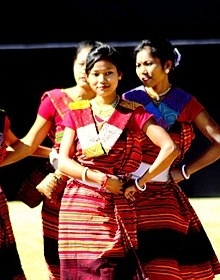
The Hajong people are an ethnic group from Northeast India and northern parts of Bangladesh. The majority of the Hajongs are settled in India and are predominantly rice-farmers. They are said to have brought wet-field cultivation to Garo Hills, where the Garo people used slash and burn method of agriculture. Hajong have the status of a Scheduled Tribe in India and they are the fourth largest tribal ethnicity in the Indian state of Meghalaya.
Read More About Hajong / Source
Lohar
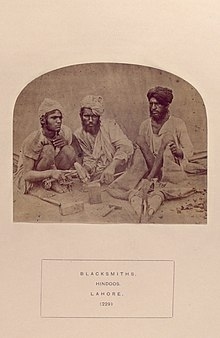
Lohar is a social group in India, Nepal and Pakistan. They are associated with iron smelting work. They form part of a loose grouping of traditionally artisanal castes known as Panchals.Lohars worship Lord Vishwakarma and other Hindu gods and claim to be Vishwakarma’s descendants and considerd themselves as vishwakarma brahmin Lohar caste is included in OBC in different parts of India. Regional synonyms include Vishwakarma and Saifi/Tarkhan (for Muslims).
Read More About Lohar / Source
Mal Paharia
The Mal Paharia people are a Dravidian ethnic people of India, mainly living in the states of Jharkhand and West Bengal. They are the original inhabitants of the Rajmahal Hills, known today as the Santal Parganas division of Jharkhand. They are listed as a Scheduled Tribe by the governments of West Bengal, Bihar and Jharkhand. They speak the Malto language, a Dravidian language, as well as a poorly-documented Indo-Aryan Mal Paharia language.
Read More About Mal Paharia / Source
Mru
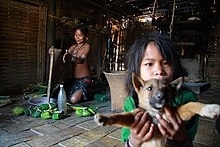
The Mru (Burmese: မရူစာ; Bengali: মুরং), also known as the Mro, Murong, Taung Mro, Mrung, and Mrucha, refer to the tribes who live in the border regions between Myanmar (Burma), Bangladesh, and India. The Mru are a sub-group of the Chin people, a few of whom live in western Myanmar. They are also found in the northern Rakhine State. In Bangladesh, they reside in the Chittagong Hills in southeast Bangladesh, primarily in Bandarban District and Rangamati Hill District. In India, they reside in West Bengal.The Mru people are divided into five distinct linguistic and cultural sub-groups: the Anok, Tshüngma, Dömrong, Dopteng, and Rümma.
Parhaiya
The Parahiya are a Hindu caste found in the state of Uttar Pradesh in North India.
Read More About Parhaiya / Source
Sauria Paharia
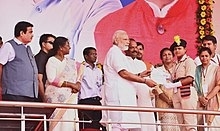
The Sauria Paharia people (also known as Maler Paharia) are a Dravidian ethnic people of Bangladesh and the Indian states of Jharkhand, West Bengal, and Bihar. They are found mostly in Santhal Parganas region in the Rajmahal Hills.
Read More About Sauria Paharia / Source



